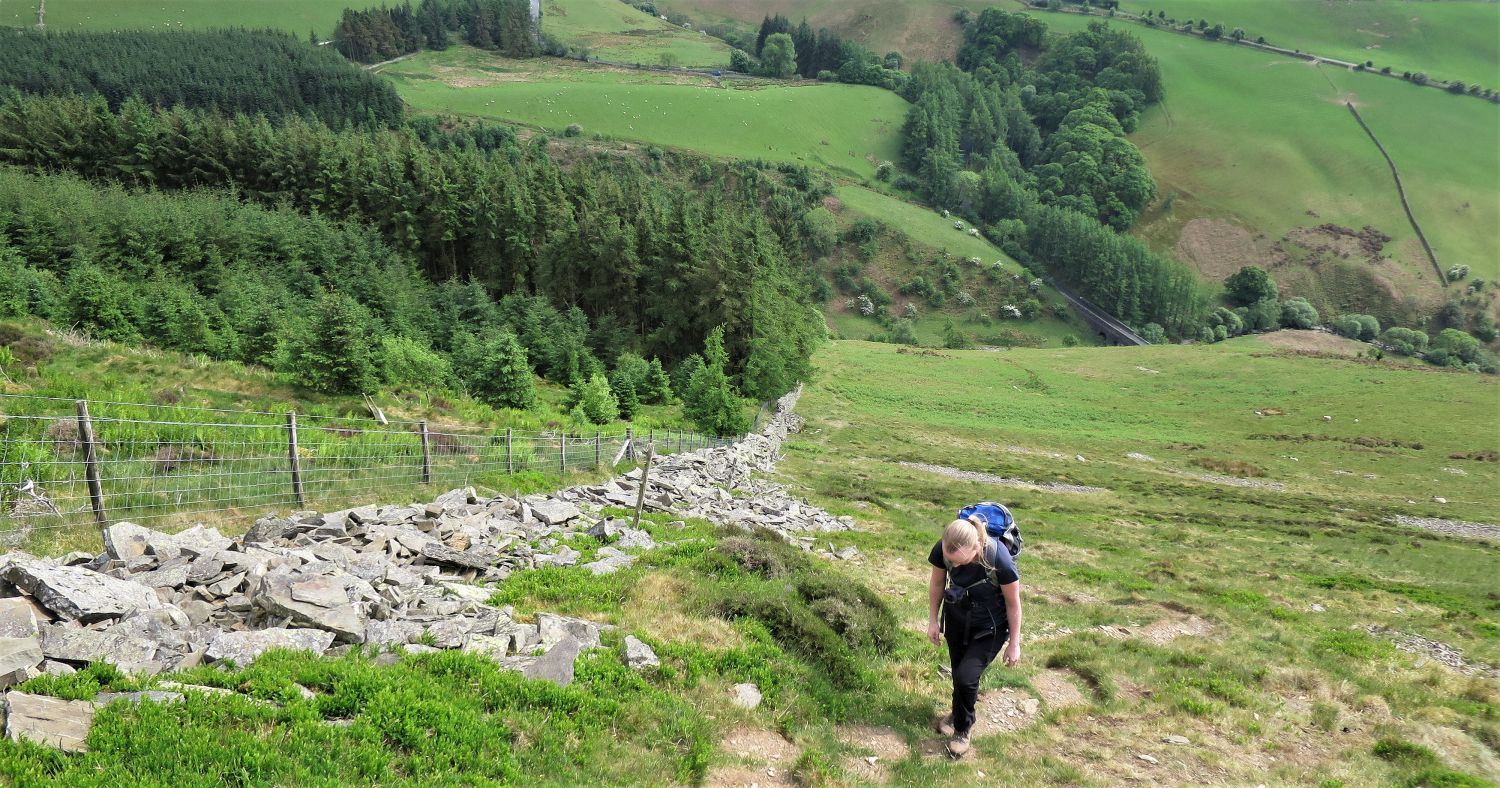As well as being a bit of a challenge walk, this route includes five Wainwrights that are normally bagged on two separate walks. Whinlatter and Graystones have always been tricky to link together, and even more so recently with the ongoing changes in the plantations around the area. However, I believe this is the perfect ’round’ for this group of fells, which includes, for added bonus, five more Birketts and one Synge. Altogether, eleven summits are visited over eleven miles.
GPX Route: Download
PDF Map: Download
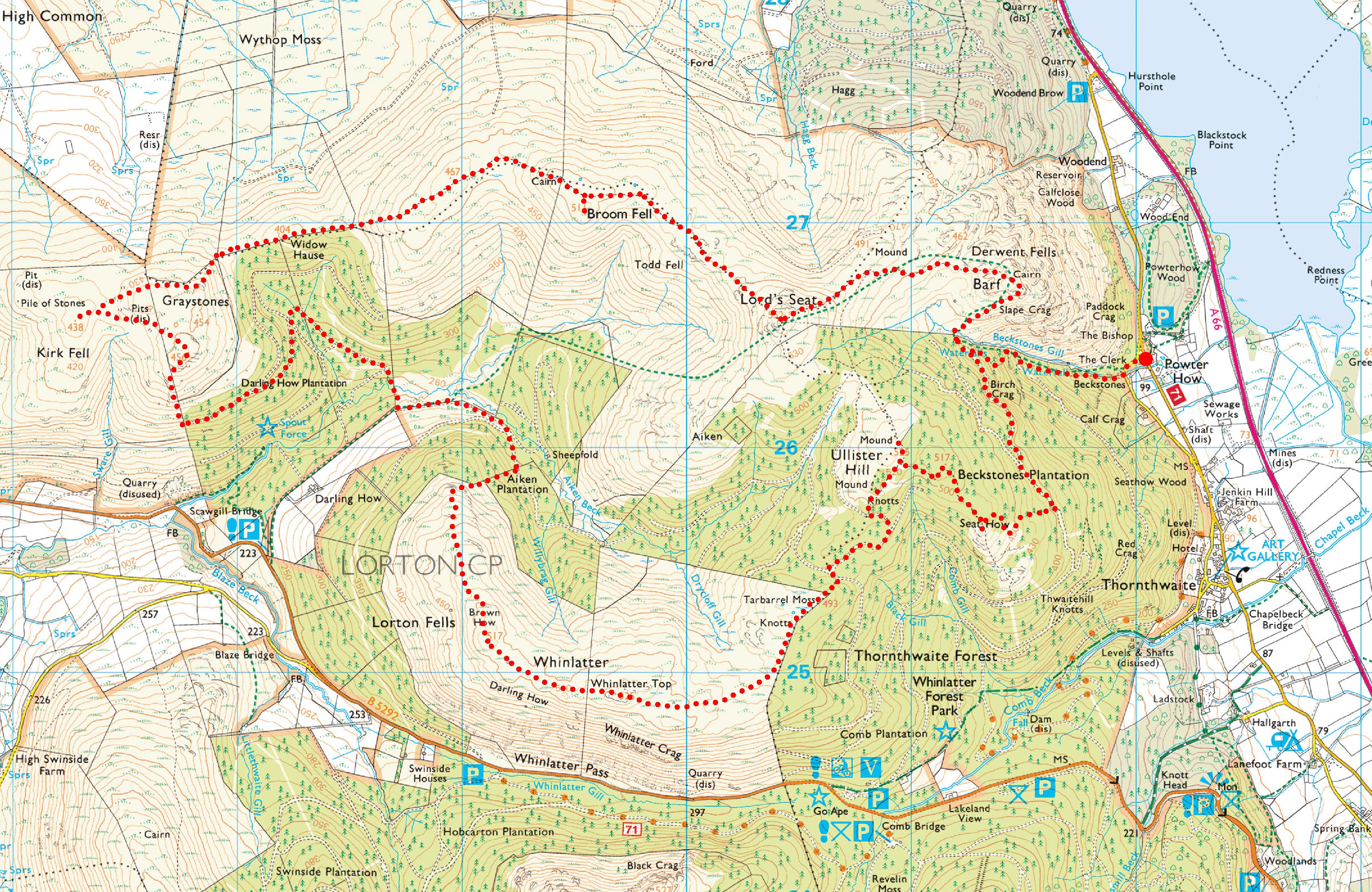
Powter How > Beckstones Gill > Seat How > Ullister Hill > Tarbarrel Moss > Whinlatter Top > Brown How > Aiken Valley > Graystones > Kirk Fell > Widow Hause > Broom Fell > Lord’s Seat > Barf > Beckstones Gill > Powter How
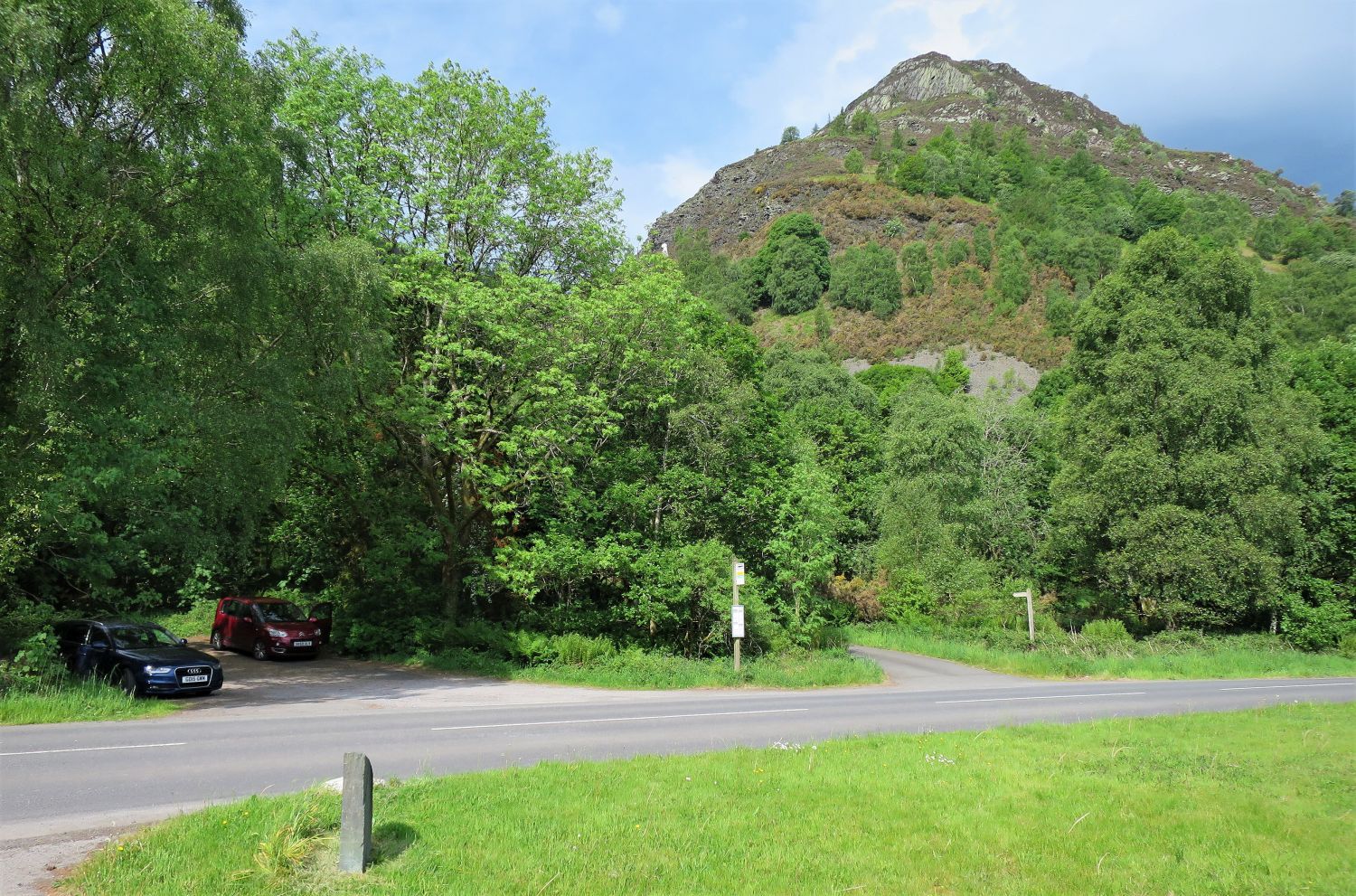 Barf from Powter How
Barf from Powter How
There is a small parking area and a bus stop in Powter How, ideally located at the base of Barf and Beckstones Gill.
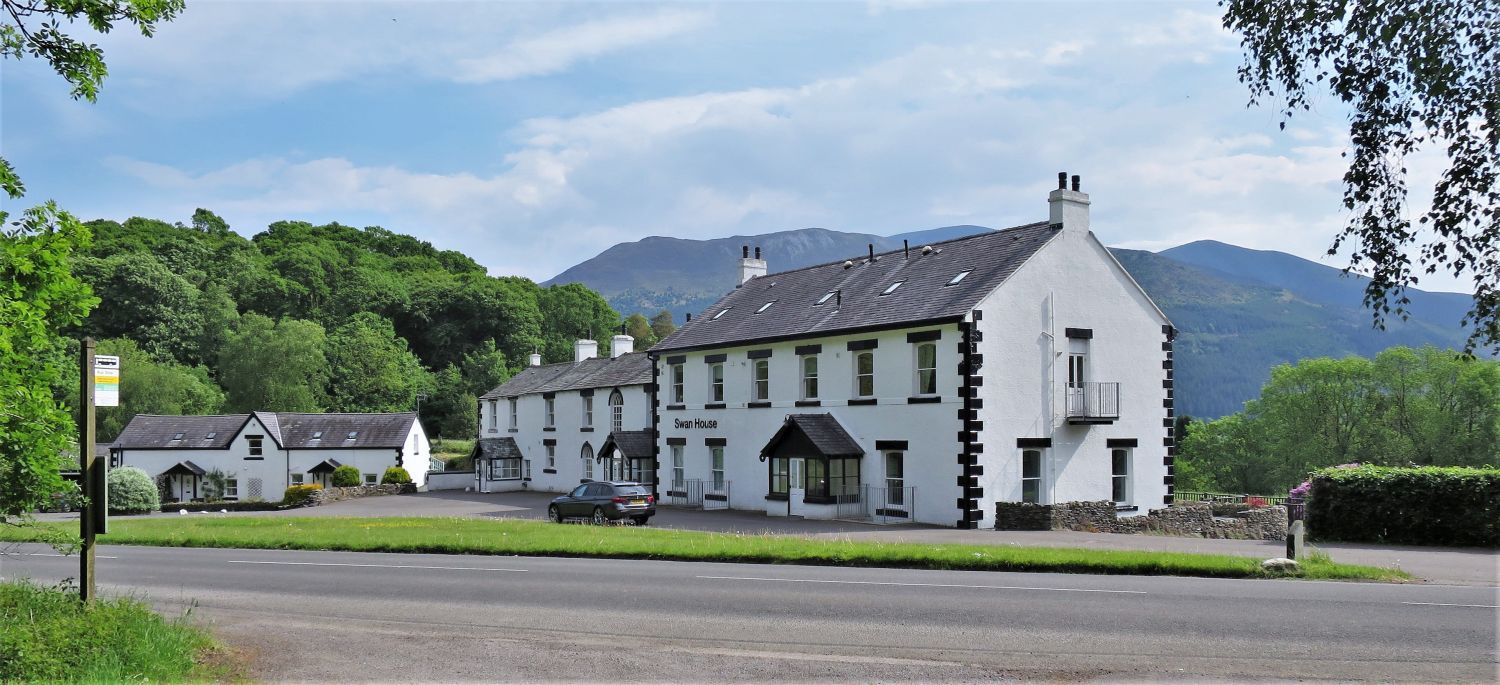 Swan House from the parking area
Swan House from the parking area
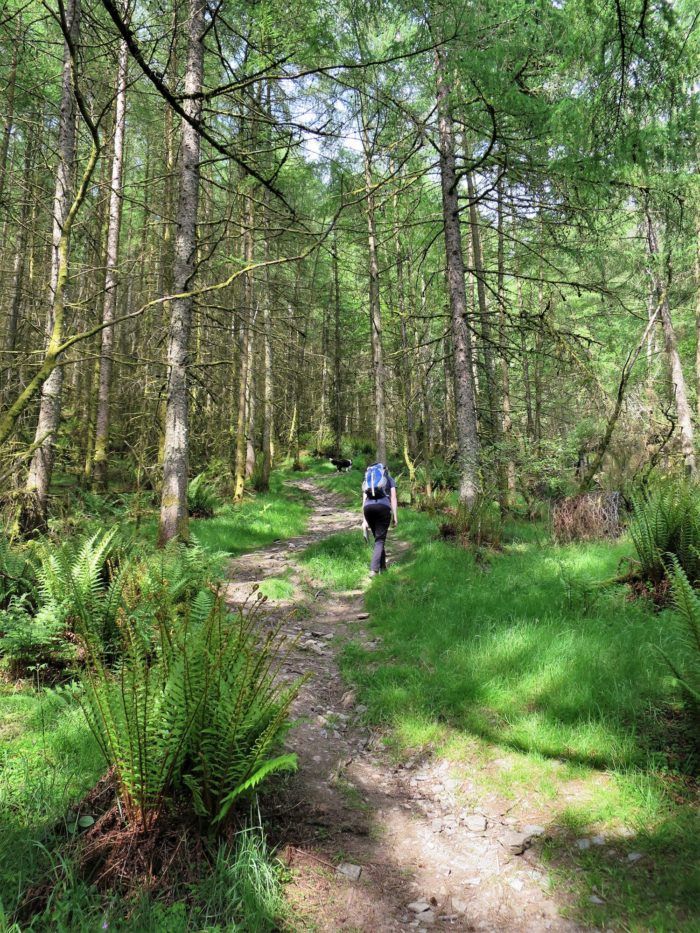 Ascending Beckstones Gill
Ascending Beckstones Gill
Right from the start of the walk, the steep ascent of Beckstones Gill slows the pace of any eager summit-baggers.
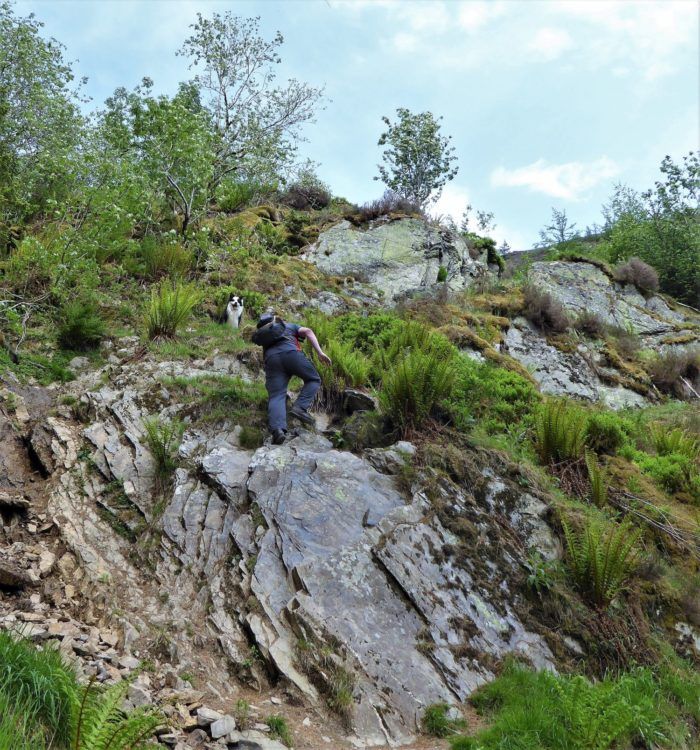 The ‘small rockface’ in Beckstones Gill
The ‘small rockface’ in Beckstones Gill
“Here scrambling is necessary at a small rockface. A post is provided to show the way, but the route is in no real doubt.” Barf 4
AW (revised by CJ)
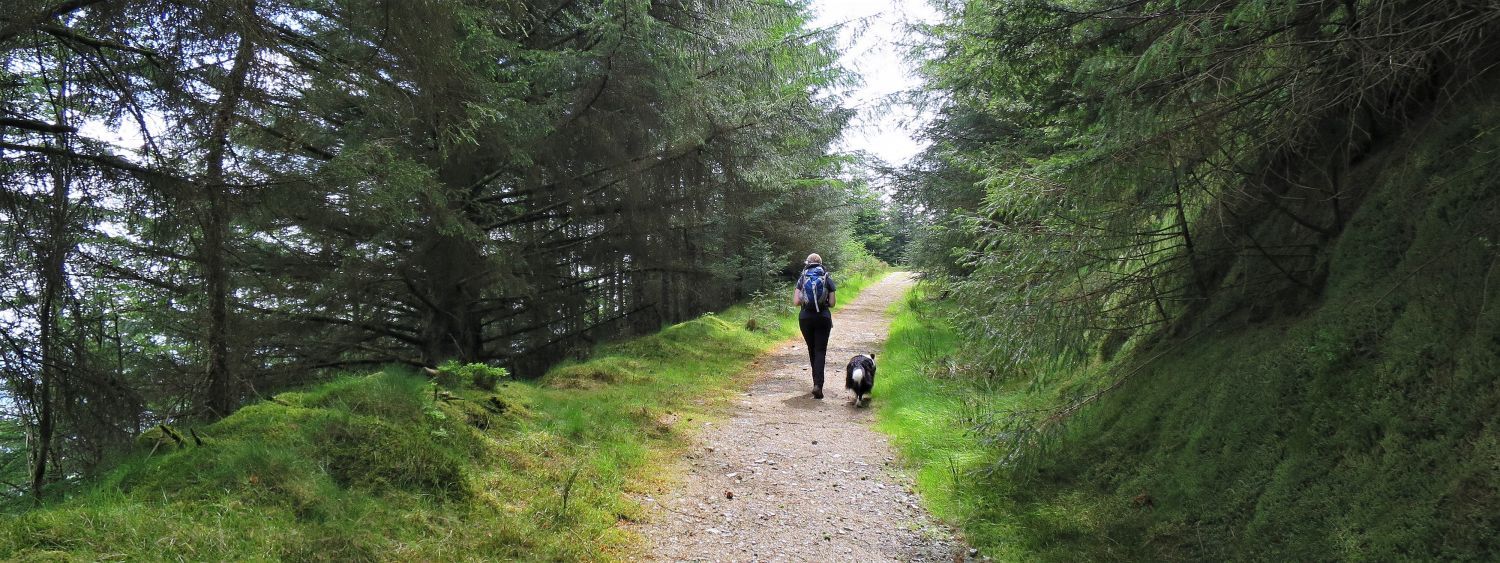 Forest road through Beckstones Plantation
Forest road through Beckstones Plantation
From the forest road that skirts around the base of Seat How, a trail path zig-zags its way towards the summit. This path is part of the ‘Seat How Summit Trail’ that starts its journey from the Whinlatter Visitor Centre.
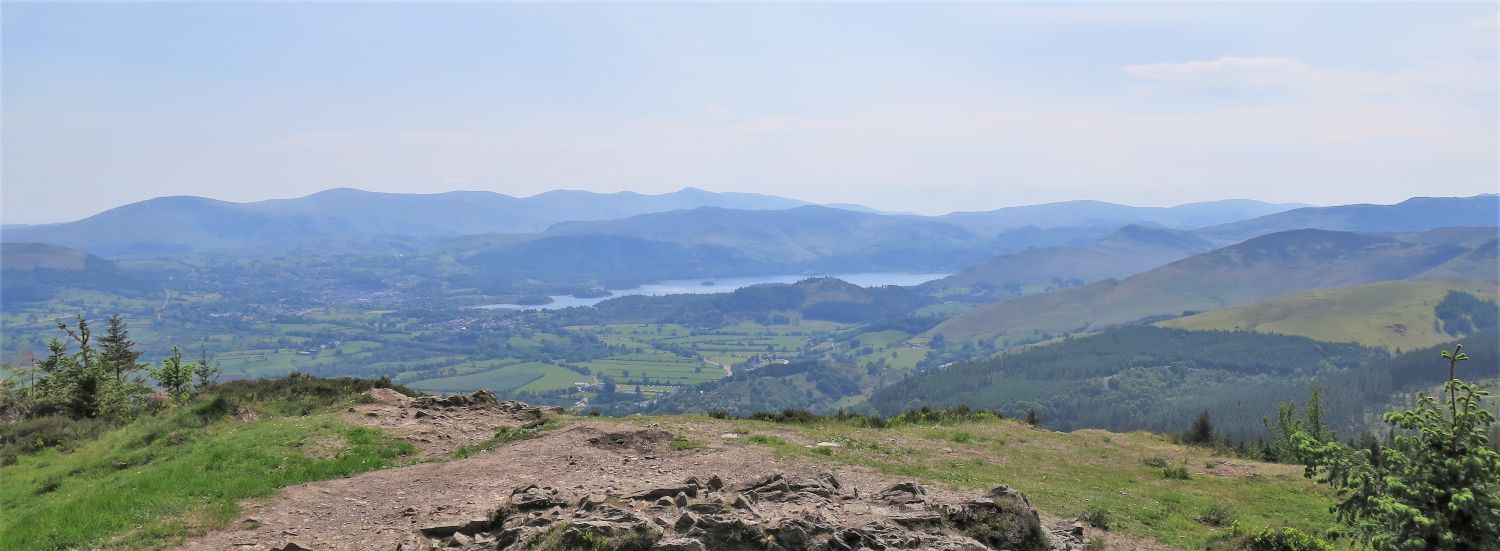 Derwent Water and the Vale of Keswick, from Seat How (1st)
Derwent Water and the Vale of Keswick, from Seat How (1st)
Because of the creation of the forest trails, this Birkett has become very popular; this is our first summit of eleven to be visited today.
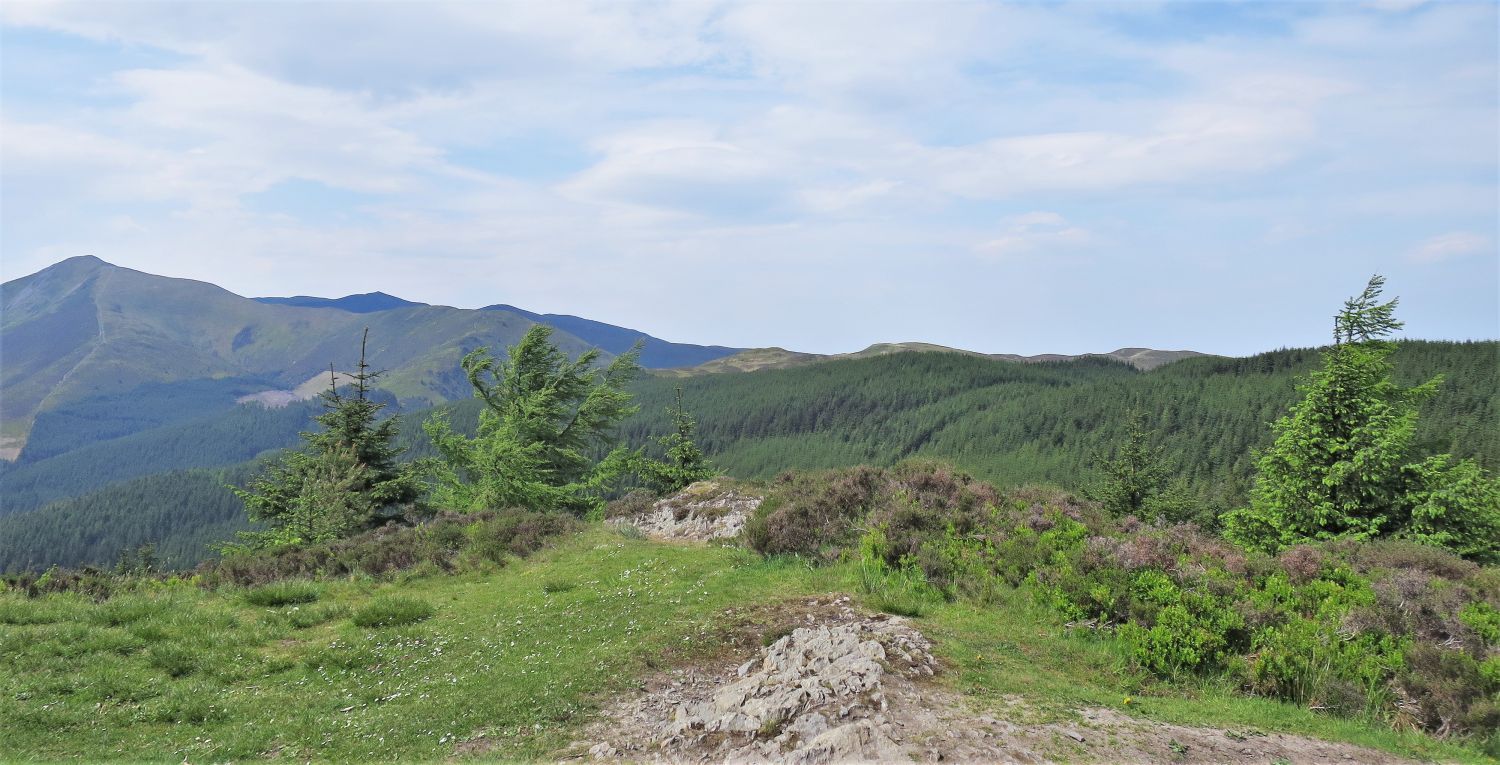 Grisedale Pike and Hopegill Head (left), from Seat How
Grisedale Pike and Hopegill Head (left), from Seat How
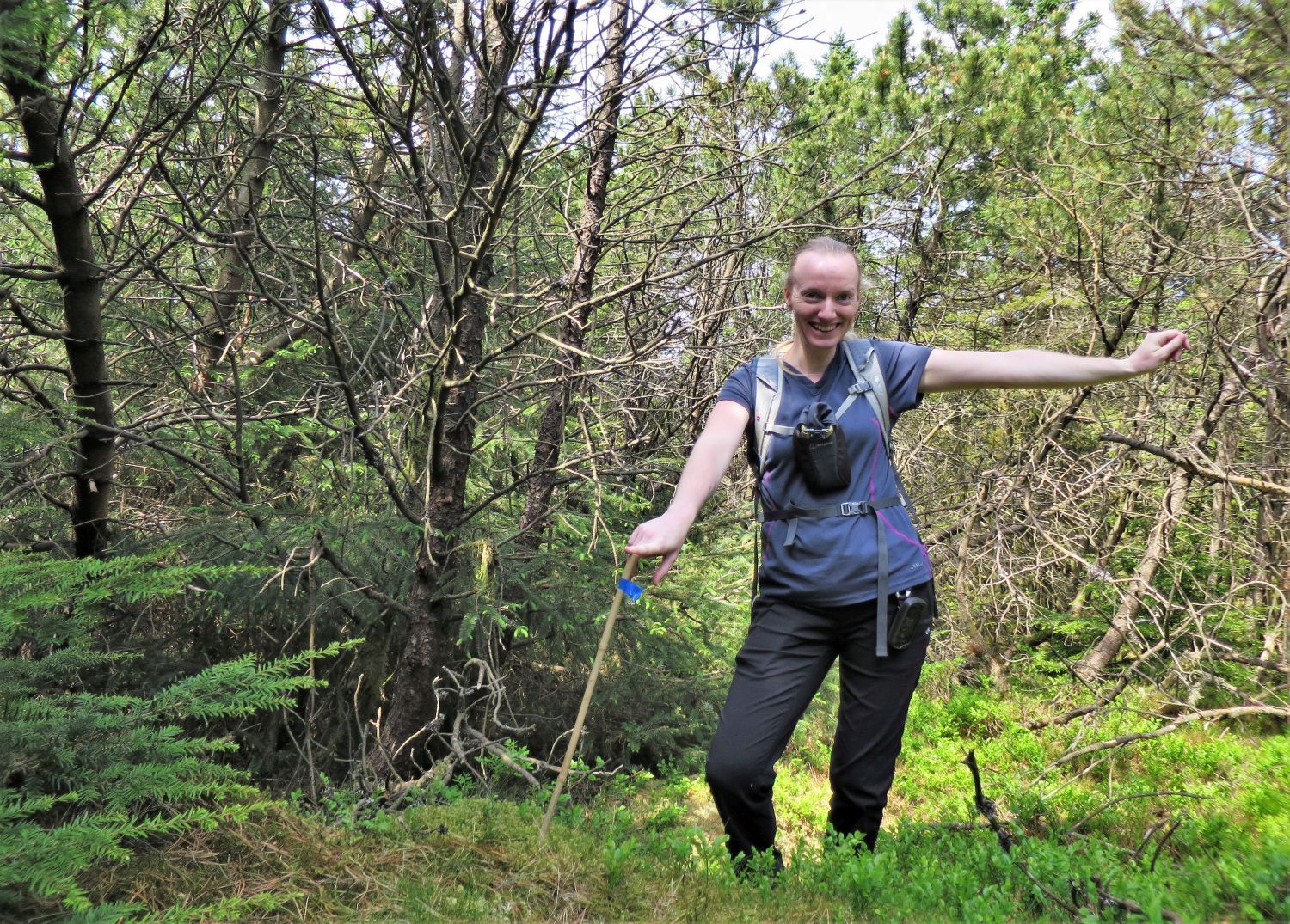 Unnamed summit near Ullister Hill
Unnamed summit near Ullister Hill
While continuing along the ‘Seat How Summit Trail’ towards Ullister Hill, an extra summit can be found on your right amongst the trees. It is unnamed, which is the reason for not adding it to our eleven summits of the day. Some kind person has marked the highest point with a stick, so can you find it?
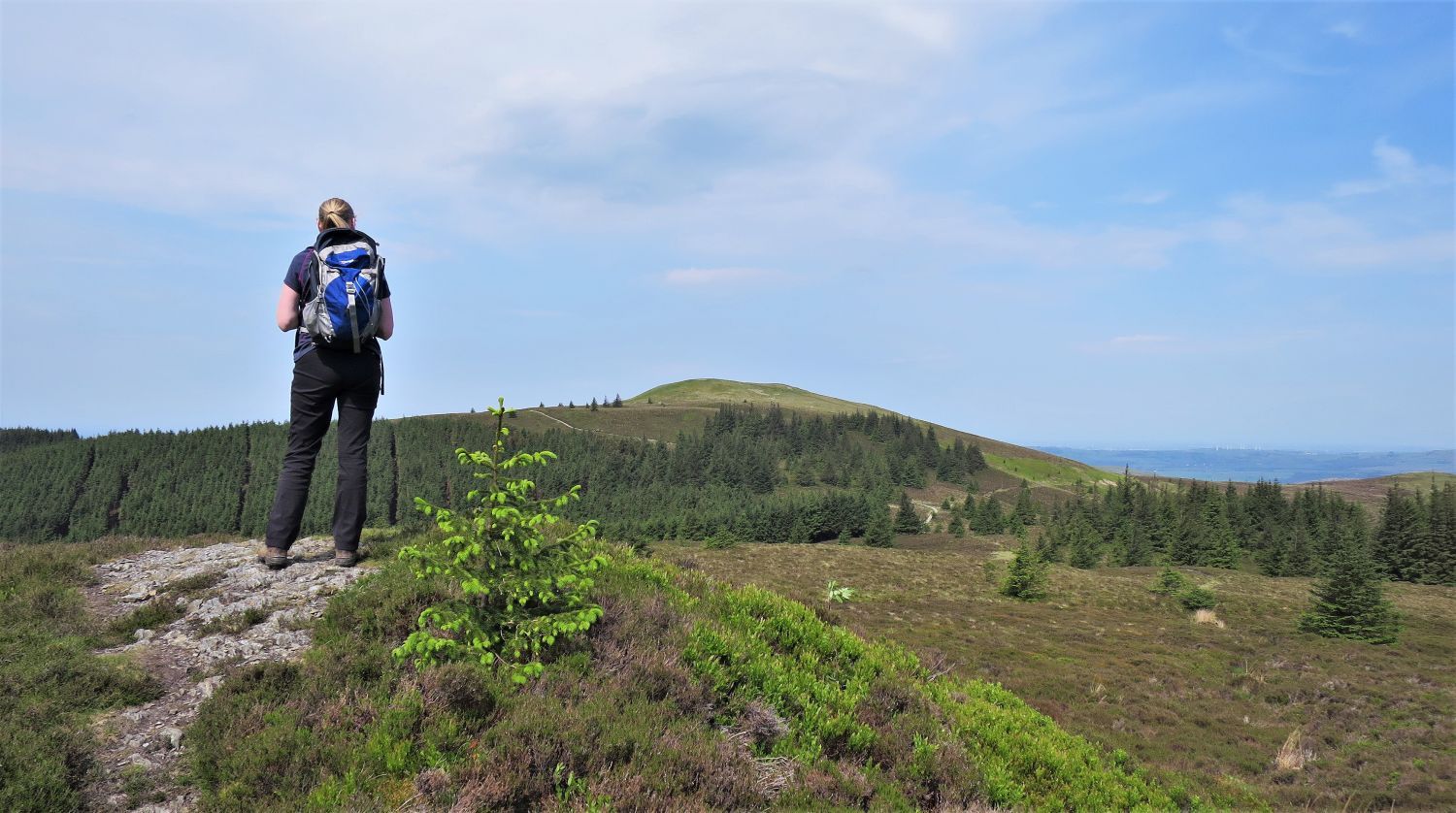 Lord’s Seat from the summit of Ullister Hill (2nd)
Lord’s Seat from the summit of Ullister Hill (2nd)
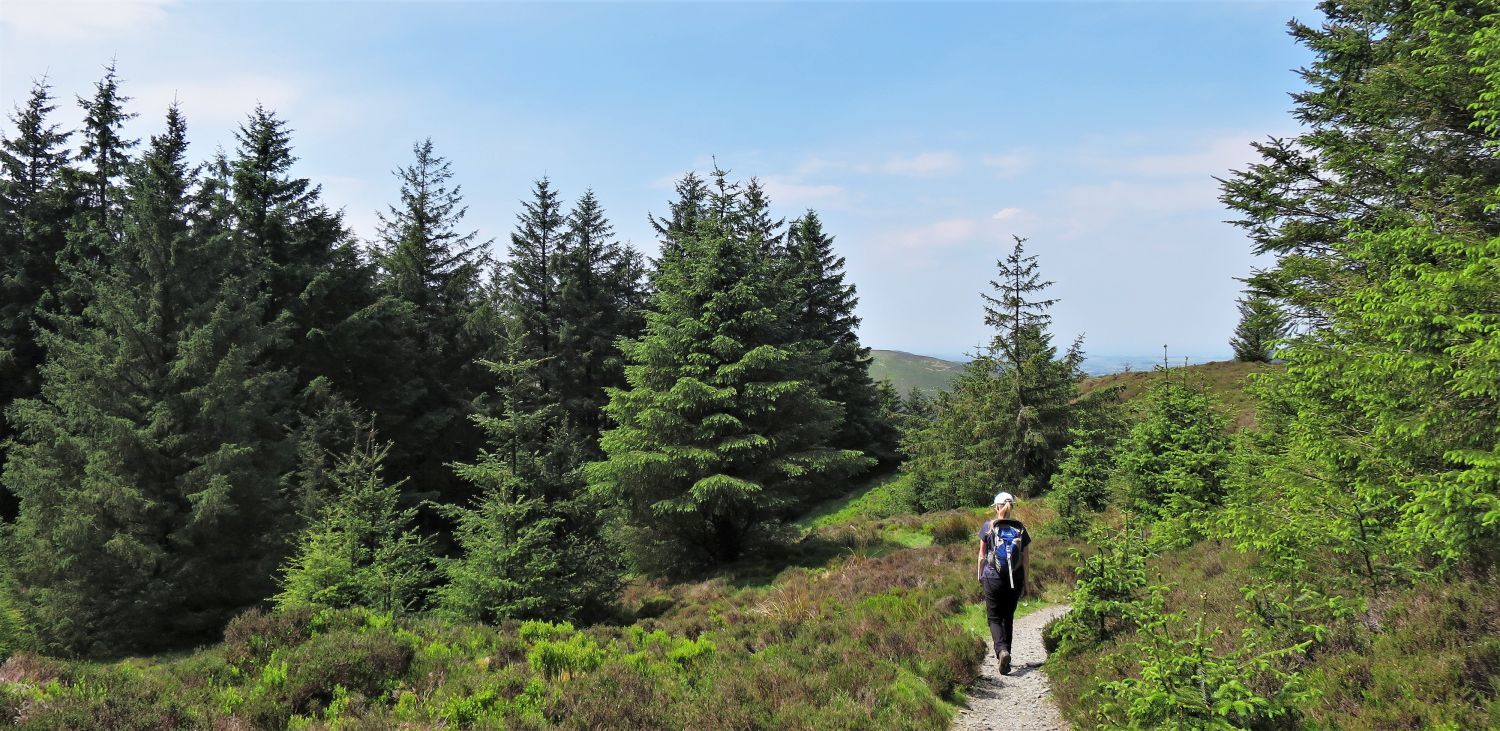 The Seat How Summit Trail
The Seat How Summit Trail
We are now back on the lovely ‘Seat How Summit Trail’ which winds its way down into the plantation.
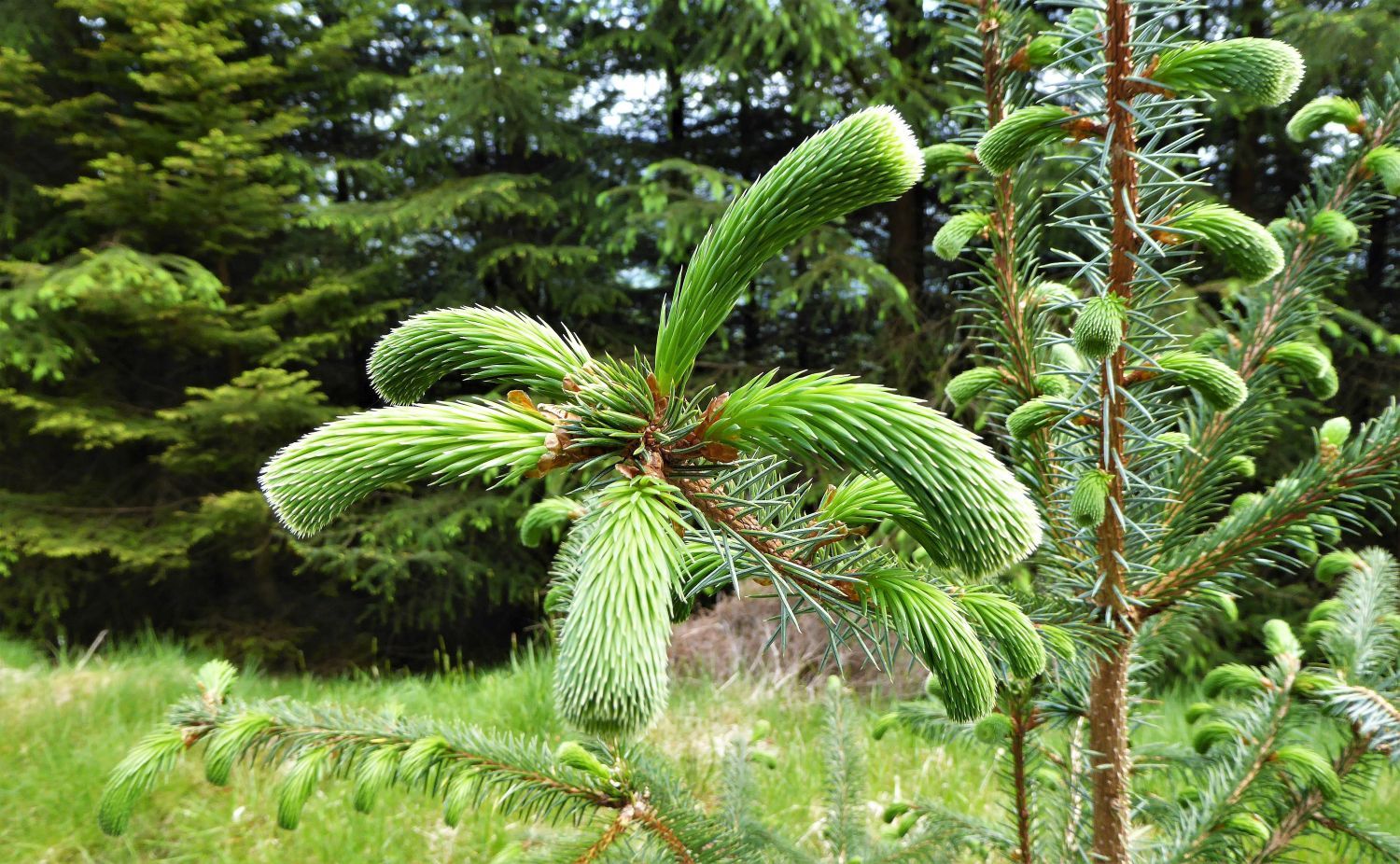 Spring growth
Spring growth
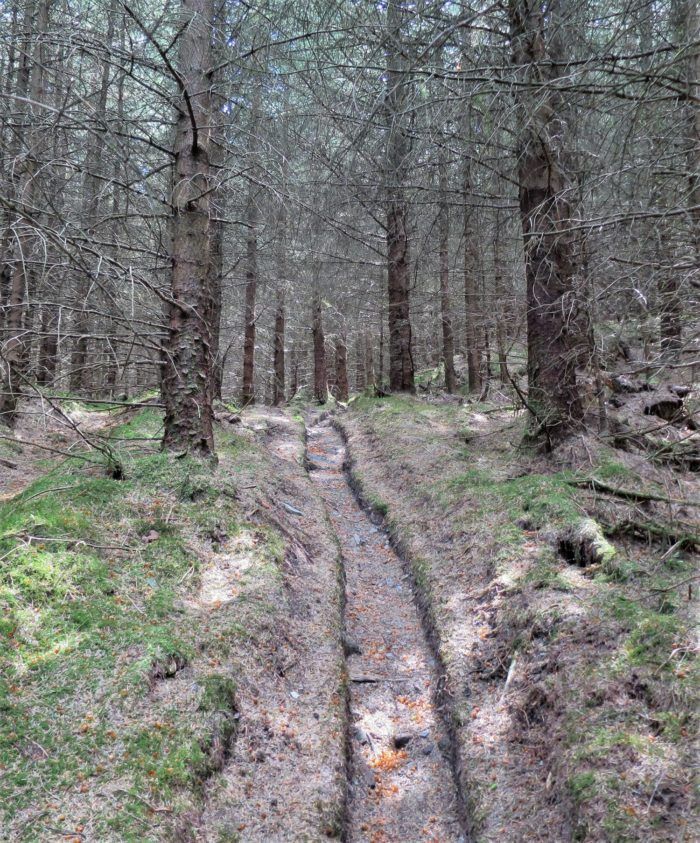 Old forest track to Tarbarrel Moss
Old forest track to Tarbarrel Moss
After walking along the trail, and a forest road for a short distance, we follow this old track that will lead us to Tarbarrel Moss. Many cycle paths criss-cross this area, so please take care.
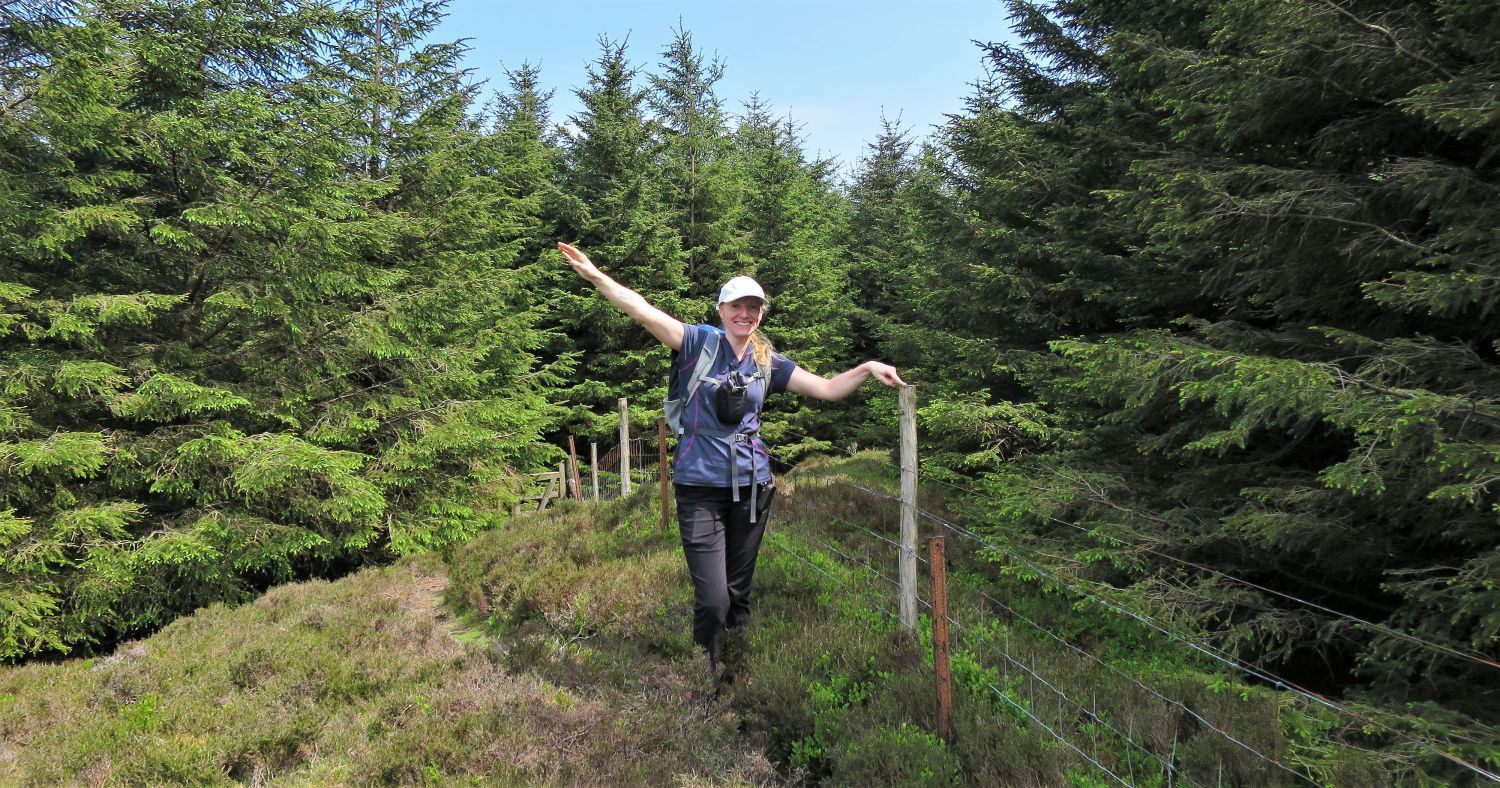 The summit of Tarbarrel Moss (3rd)
The summit of Tarbarrel Moss (3rd)
Don’t expect stunning views from this summit, or cairn-huggers refusing to shift!
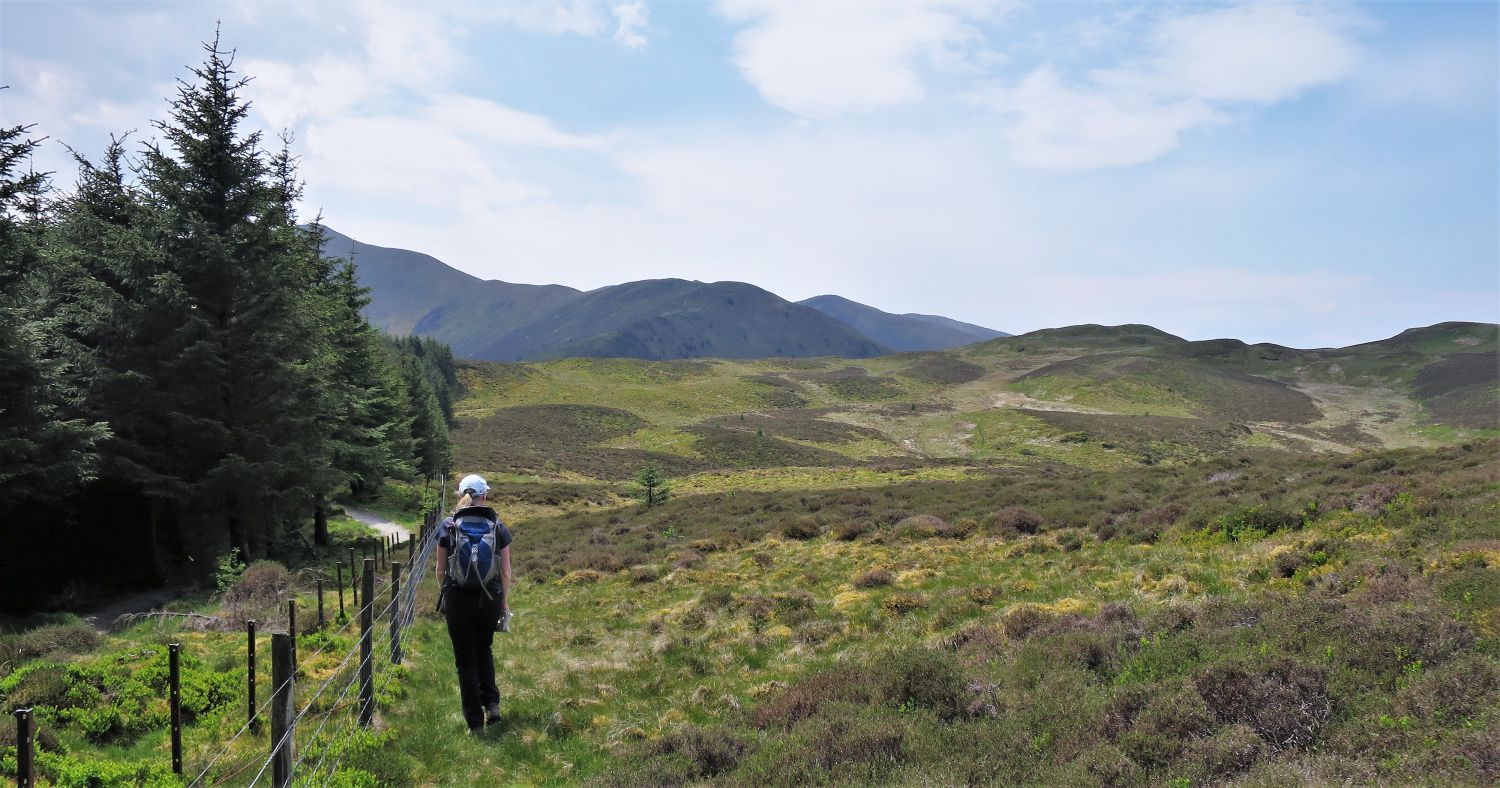 Whinlatter Top from the descent of Tarbarrel Moss
Whinlatter Top from the descent of Tarbarrel Moss
We leave the summit and suddenly we are in the open. The walk towards and over Whinlatter is pleasant.
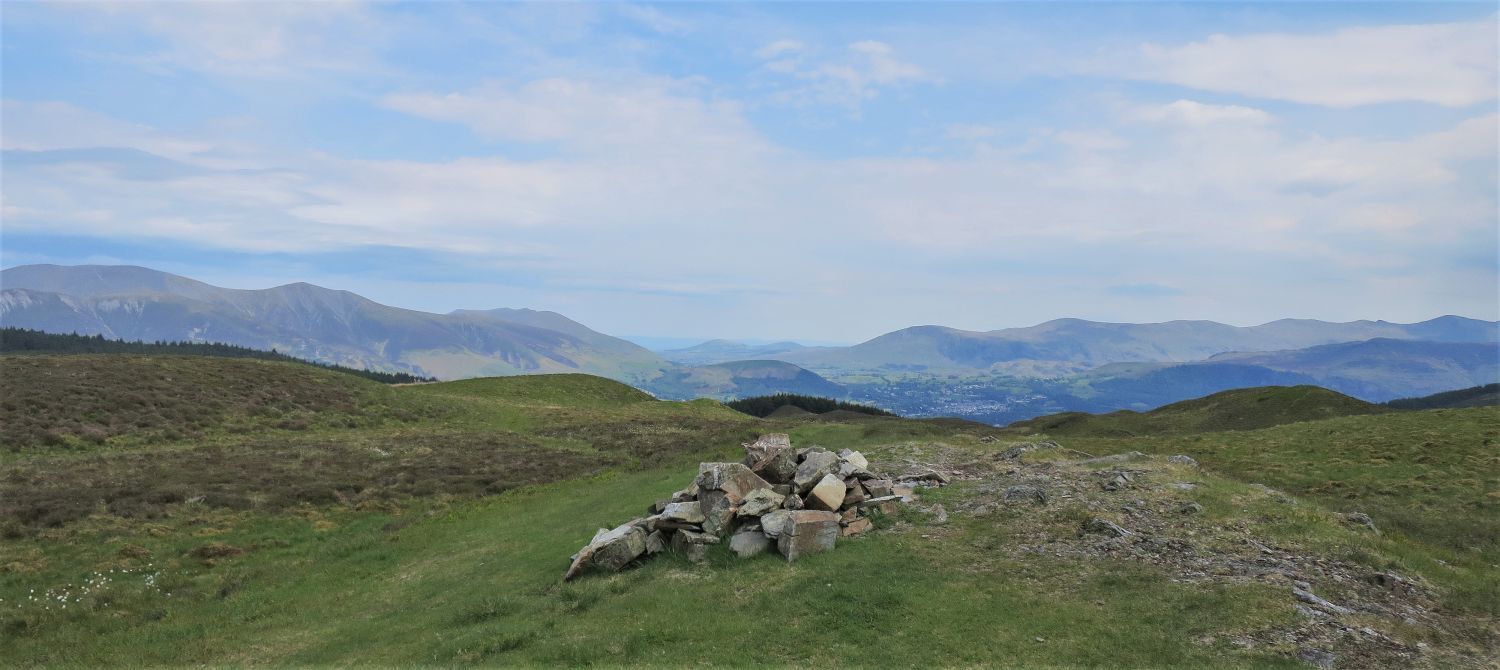 The Vale of Keswick from Whinlatter Top (4th)
The Vale of Keswick from Whinlatter Top (4th)
Although the highest point of the fell, the ‘east top’ (Whinlatter Top), which is our fourth summit of the day, is not credited as being the main summit, but Brown How is. Through “line of vision”, Alfred Wainwright worked out in the early 60s that the ‘east top’ is higher than Brown How (1696′), however, it wasn’t until 2008 that the ‘east top’ was given an altitude of 1722′ by Ordnance Survey and confirmed as the highest point along the ridge.
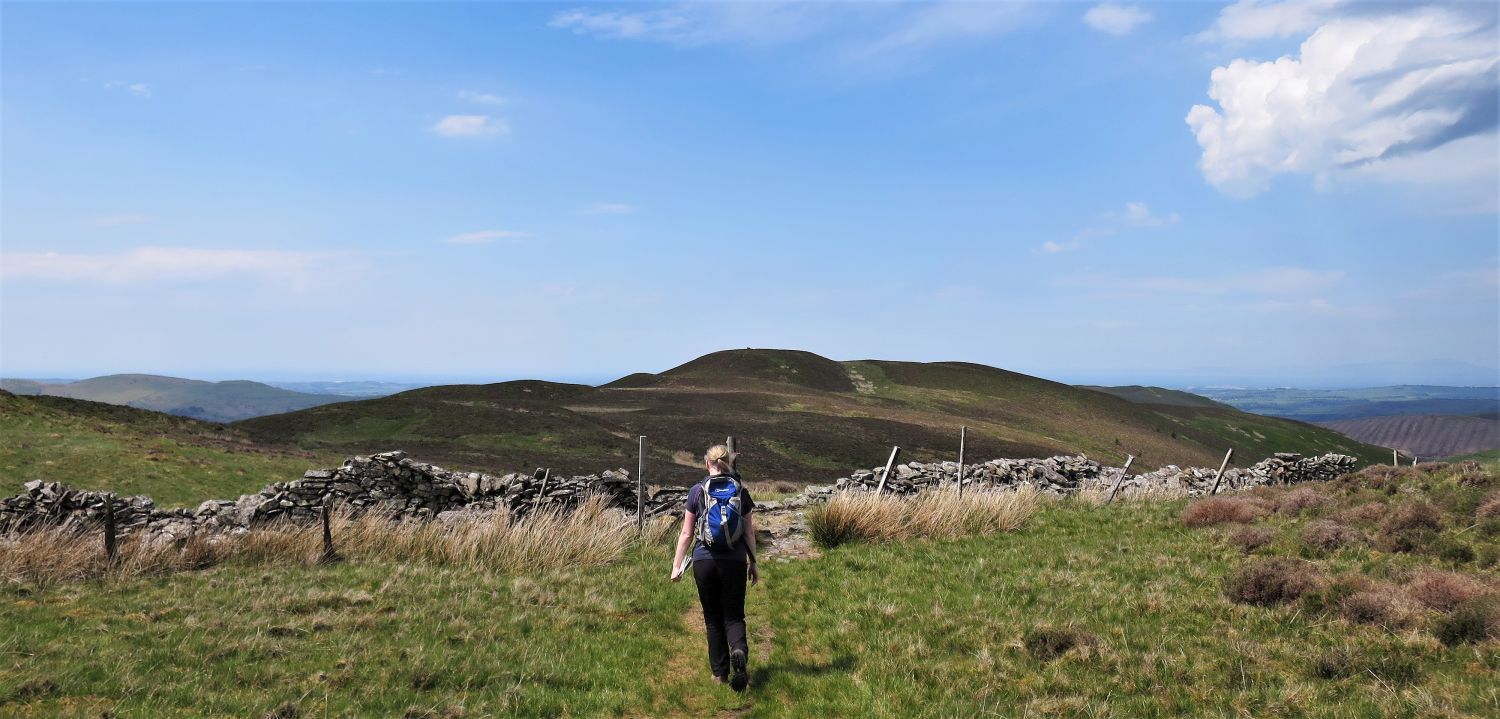 Brown How from the ridge of Whinlatter
Brown How from the ridge of Whinlatter
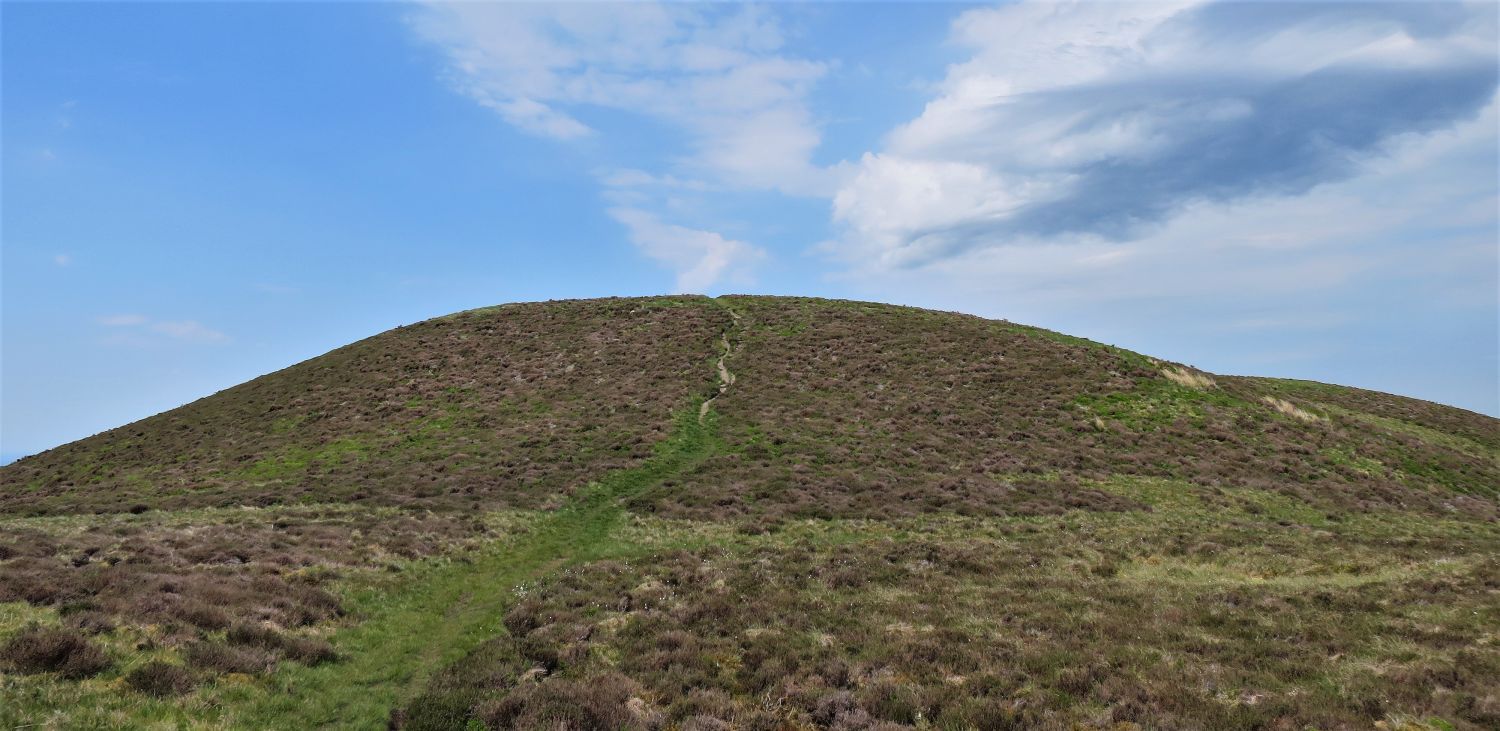 Ascending Brown How
Ascending Brown How
“The part of the fell recognised as the summit is the small heathery dome of Brown How at the westerly end of its long undulating top” Whinlatter 5
AW
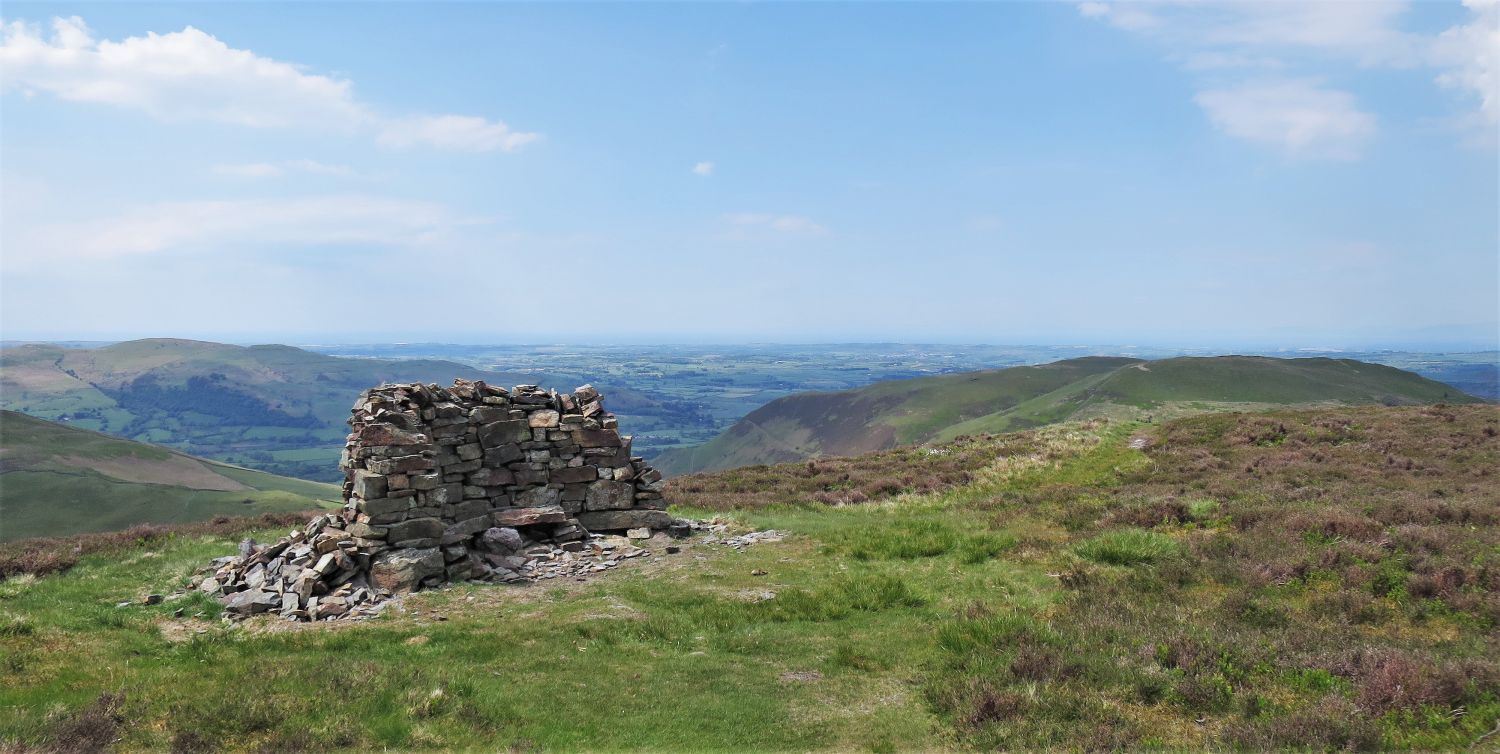 Fellbarrow (left) and Graystones (right), from the summit of Brown How (5th)
Fellbarrow (left) and Graystones (right), from the summit of Brown How (5th)
“Here, still in a good state of preservation, is a wall in the form of a crescent, which, if intended as a wind-shelter, seems an extravagance in a place so seldom visited; more probably, considering the ocean of heather all around, it was built to serve as a shooting hide.” Whinlatter 5
AW
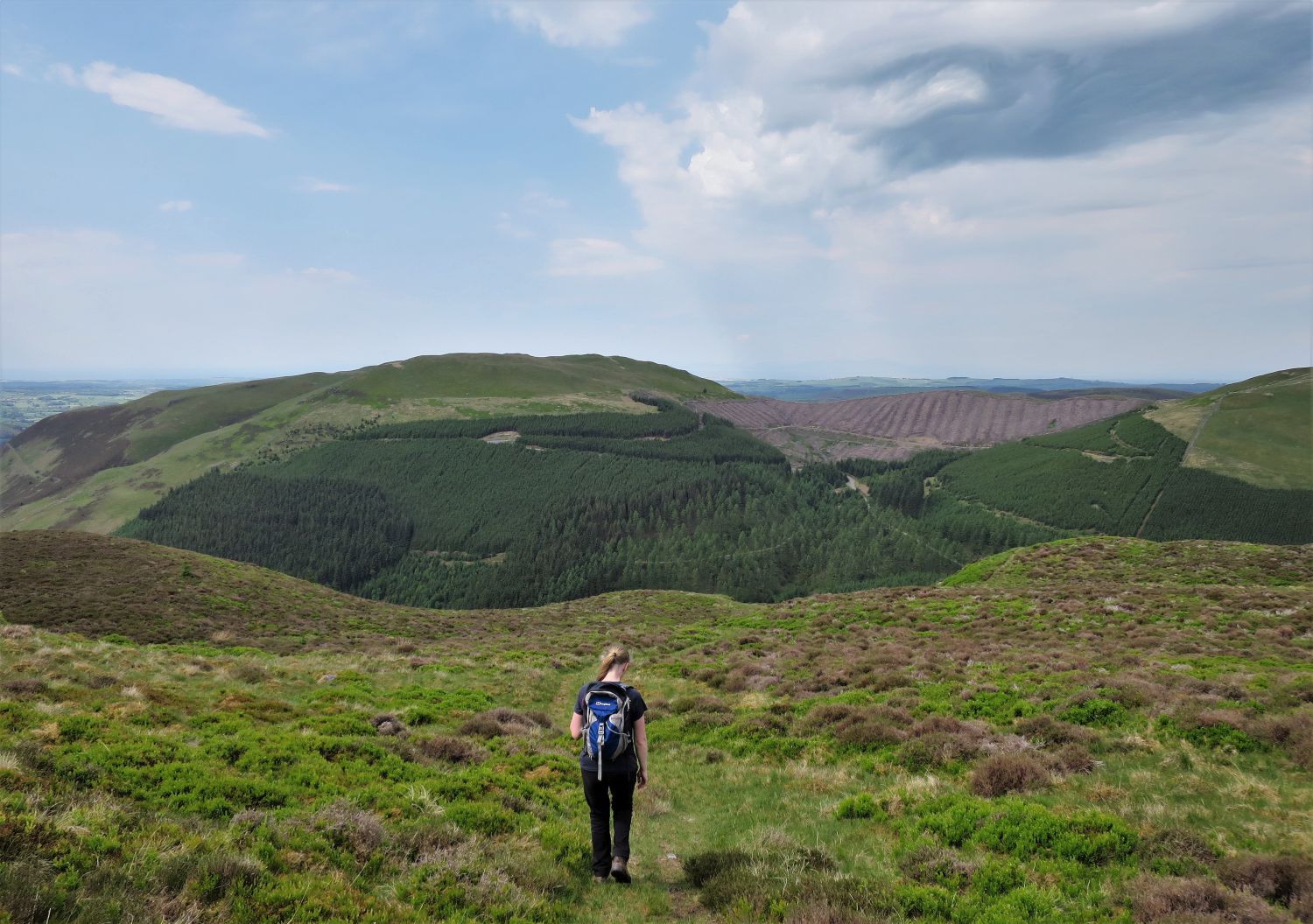 Graystones and Widow Hause from the descent of Brown How
Graystones and Widow Hause from the descent of Brown How
We now head for the second part of our walk, which is the Lord’s Seat ridge that includes six summits. Firstly, we have to drop down into the Aiken Valley, and then climb Graystones via its steep south flank.
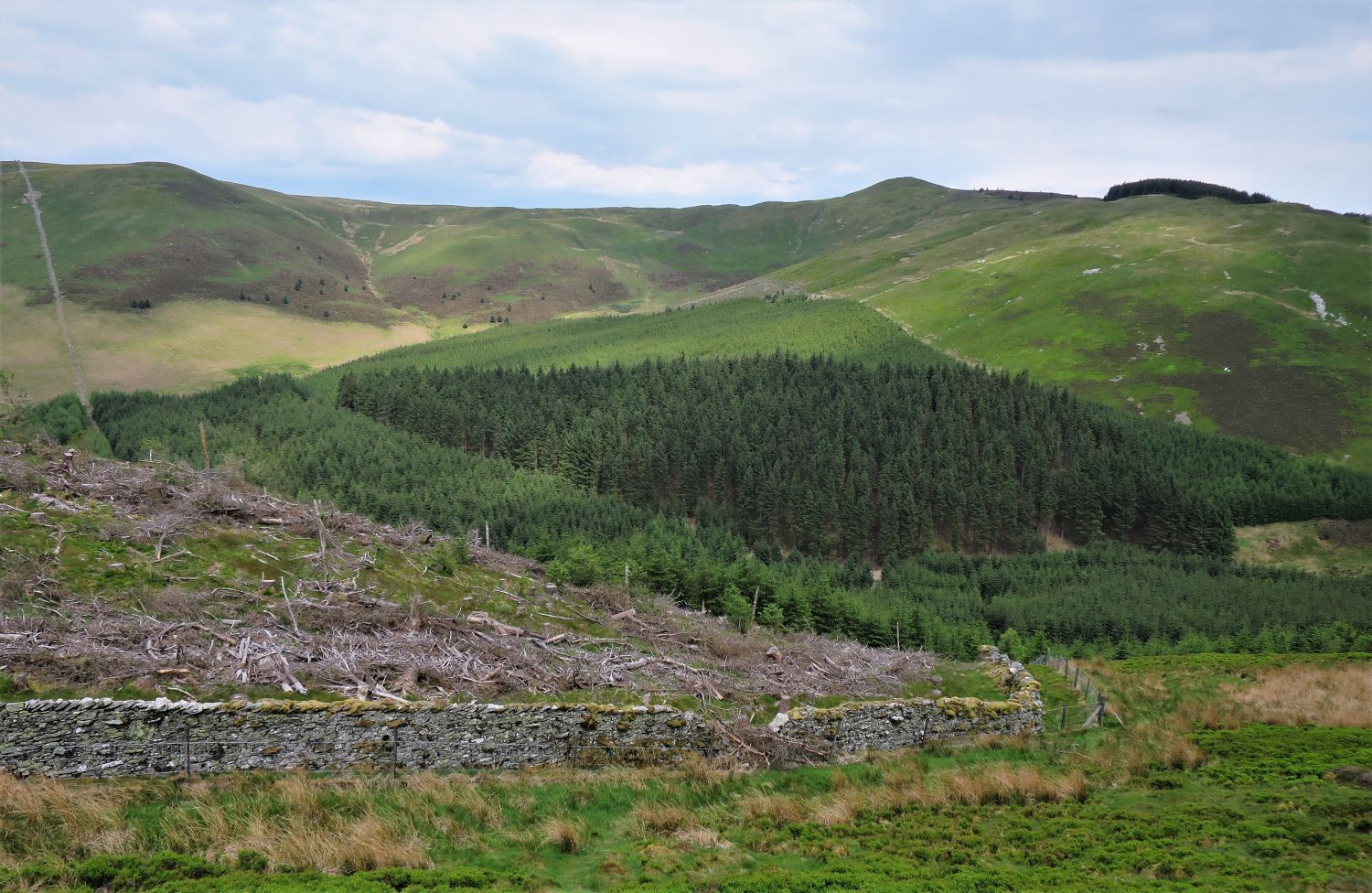 Broom Fell and Lord’s Seat over Aiken Valley
Broom Fell and Lord’s Seat over Aiken Valley
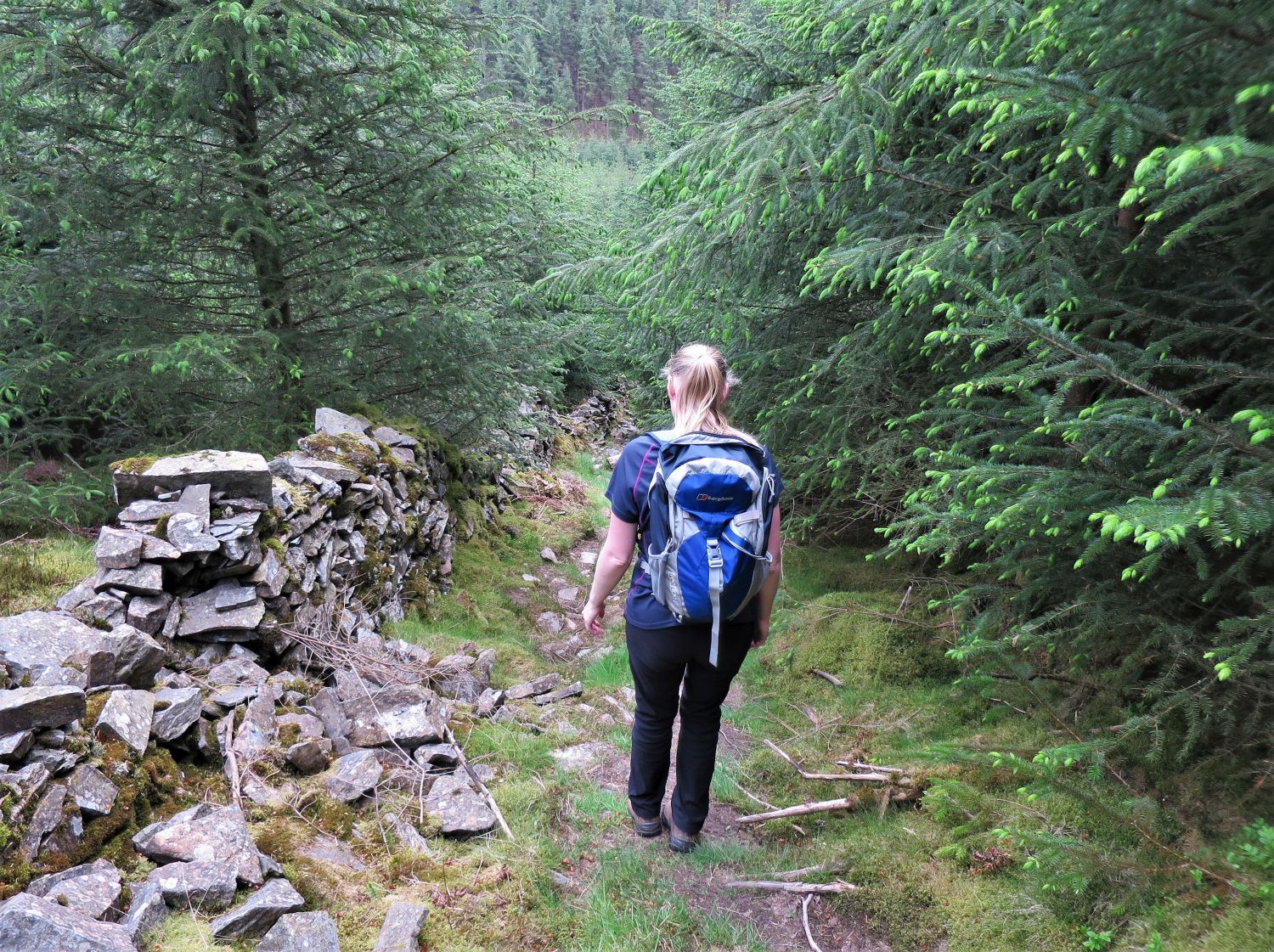 Descent into Aiken Valley
Descent into Aiken Valley
I remember descending down this way many years ago, and thinking how steep and tricky it was; maybe I’m more experienced now, but it seems an easy and pleasant way down these days.
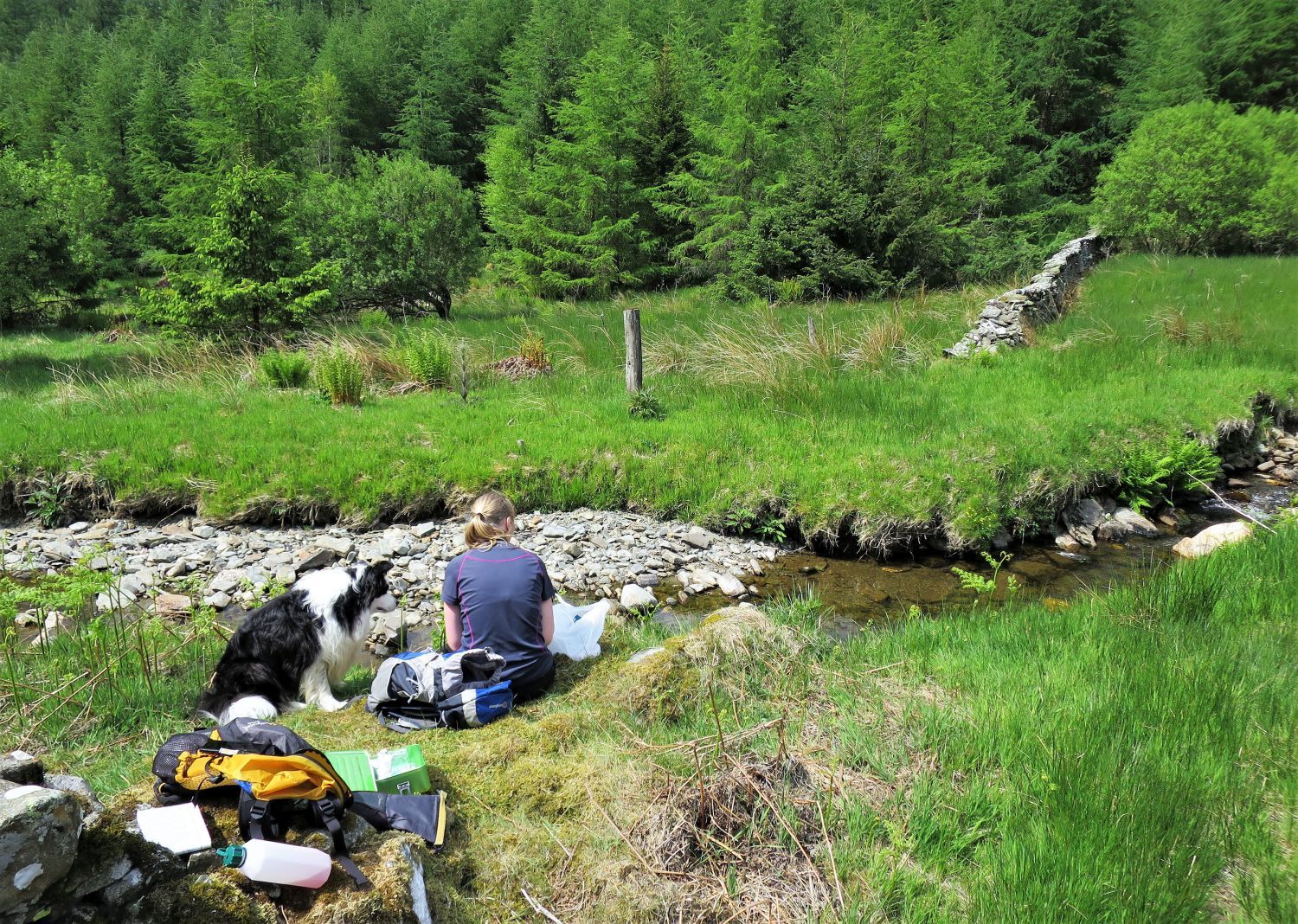 Lunch at Aiken Beck
Lunch at Aiken Beck
The wall opposite leads us to the forest road in Darling How Plantation.
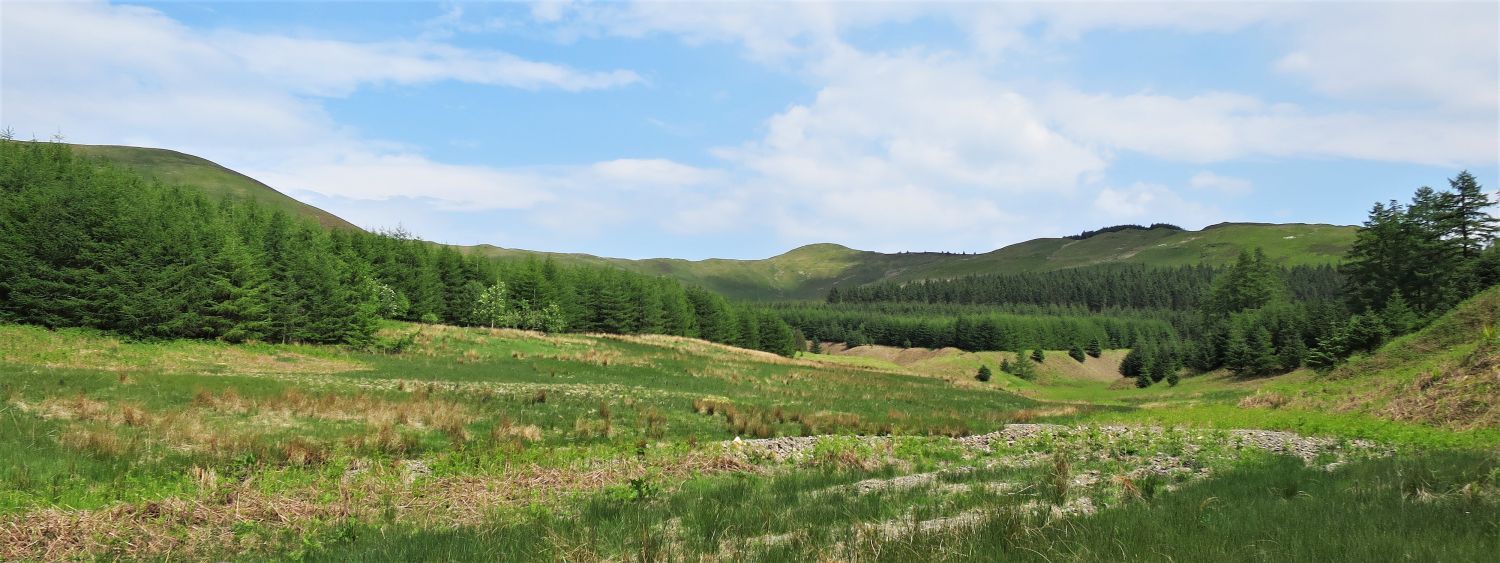 Lord’s Seat over Aiken Valley
Lord’s Seat over Aiken Valley
“Uninhabited, and completely hidden amongst the hills, Aiken has an appeal all its own.” Whinlatter 2
AW
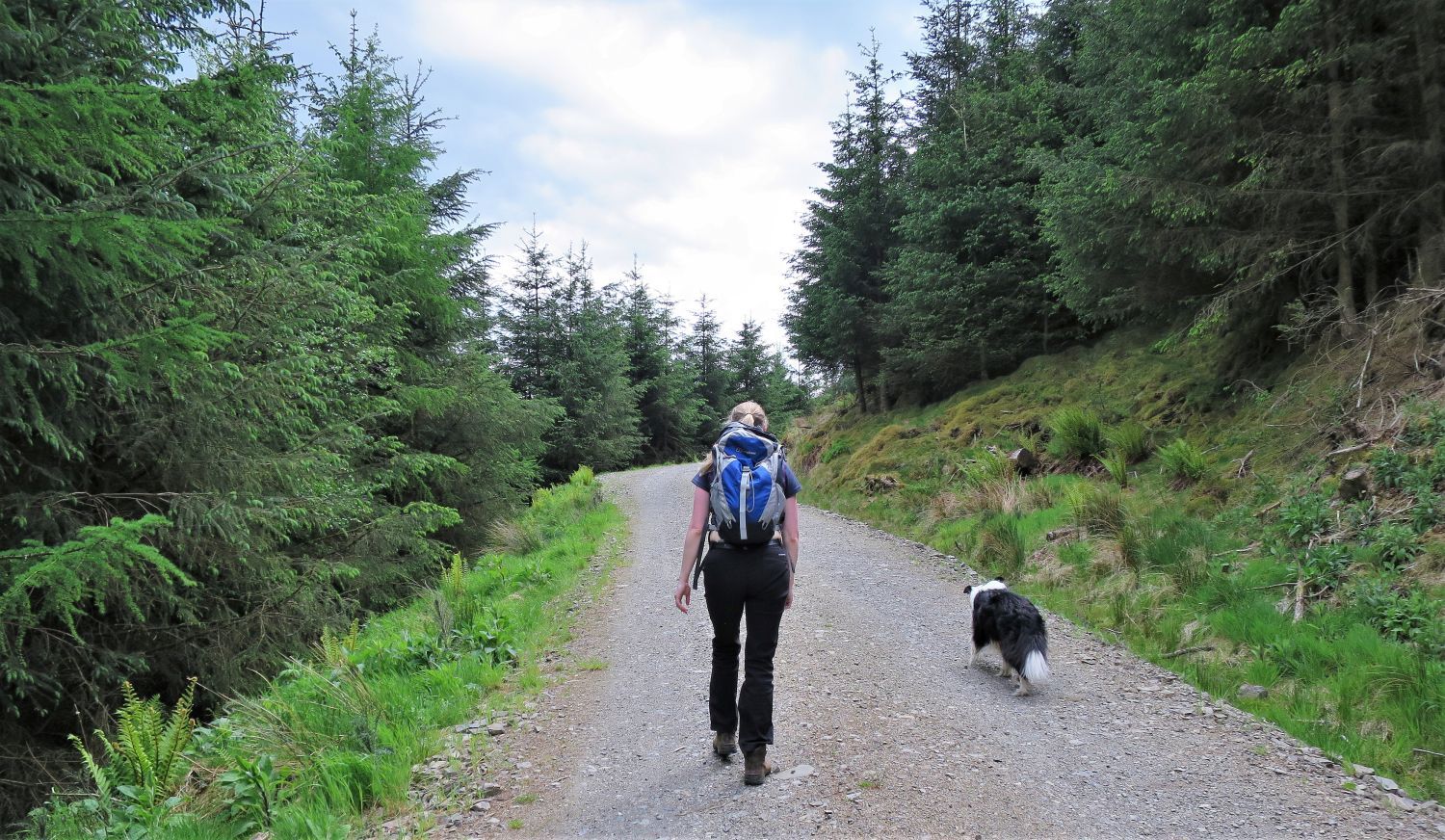 Forest road in Darling How Plantation
Forest road in Darling How Plantation
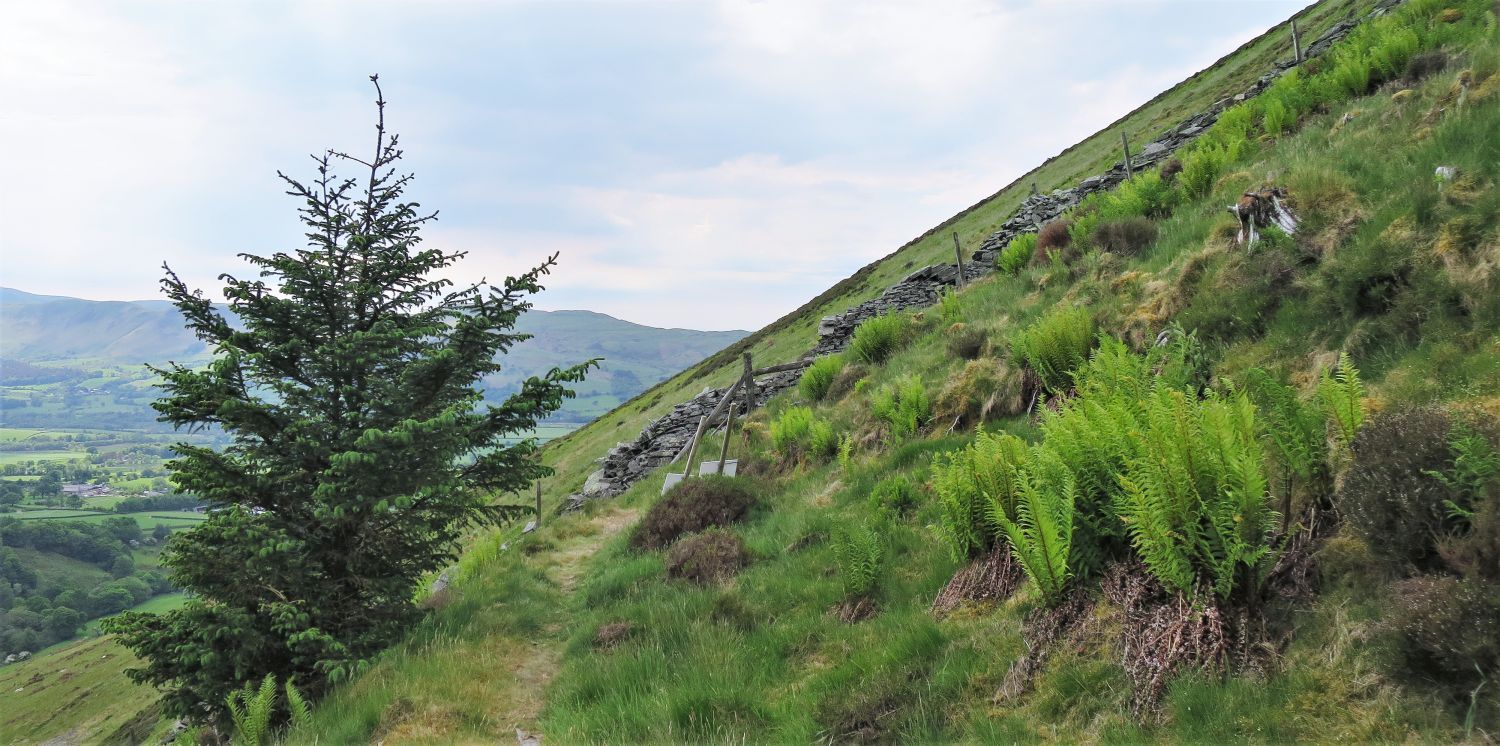 Approaching the southern wall of Graystones
Approaching the southern wall of Graystones
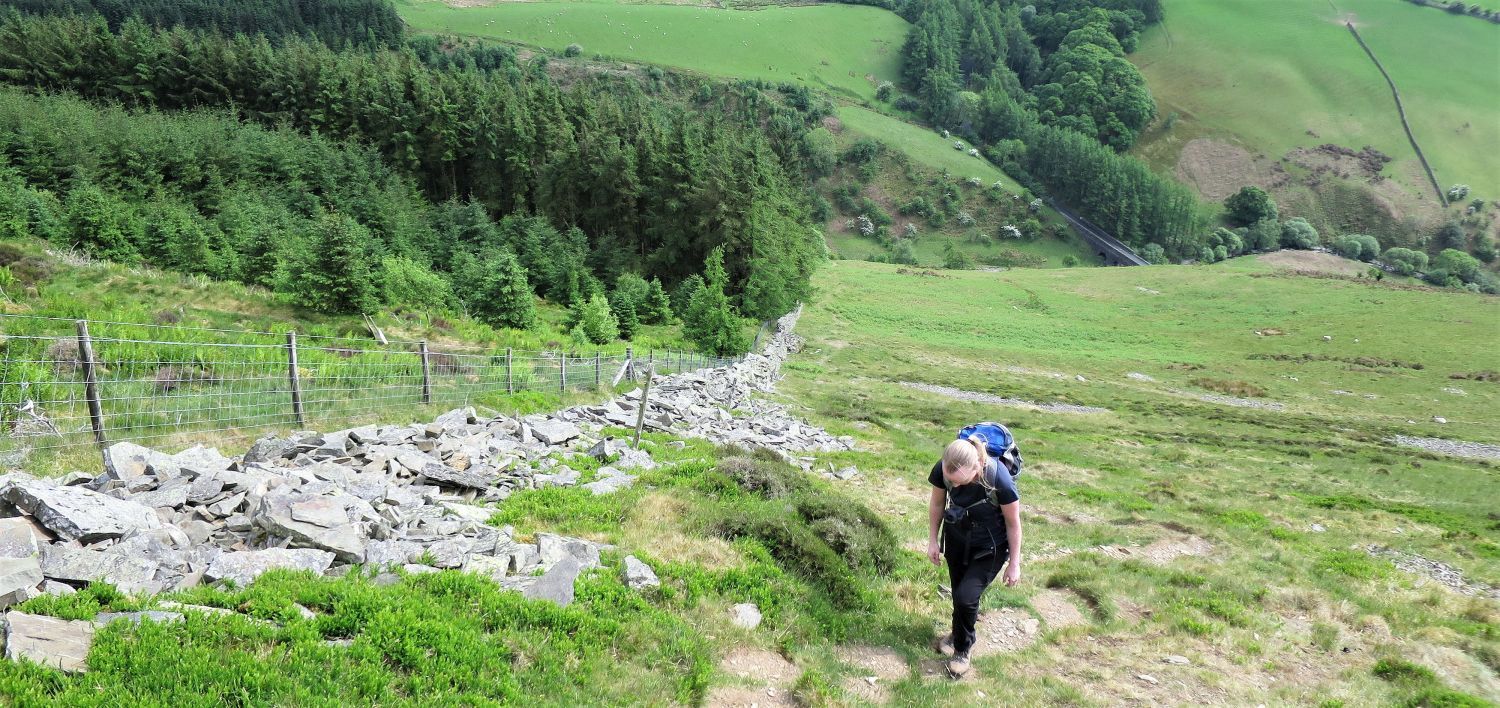 Looking down to Scawgill Bridge from the ascent of Graystones
Looking down to Scawgill Bridge from the ascent of Graystones
This is a killer of a steep climb, especially after 5 summits and many ups-and-downs.
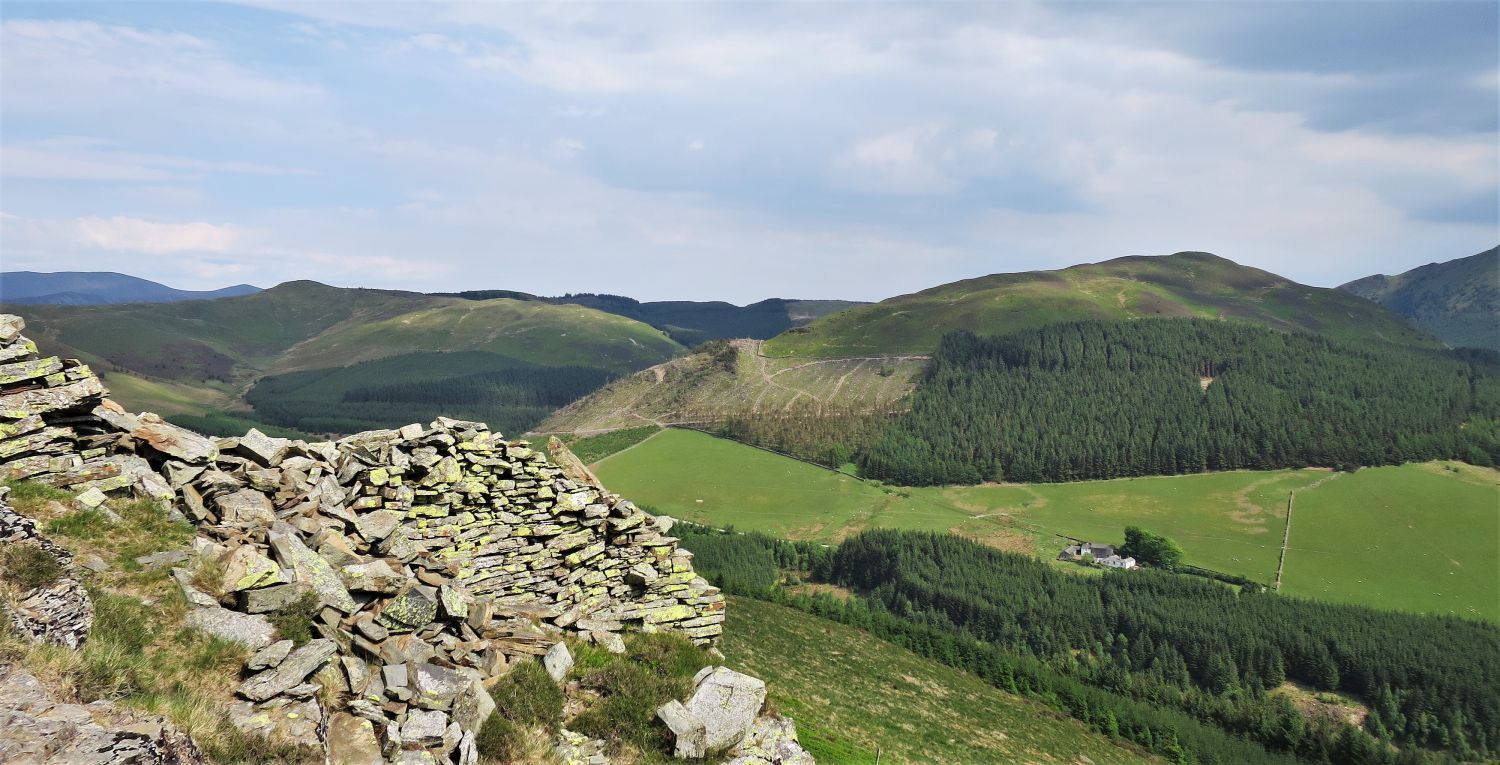 Lord’s Seat (left) and Brown How (right) from the ascent of Graystones
Lord’s Seat (left) and Brown How (right) from the ascent of Graystones
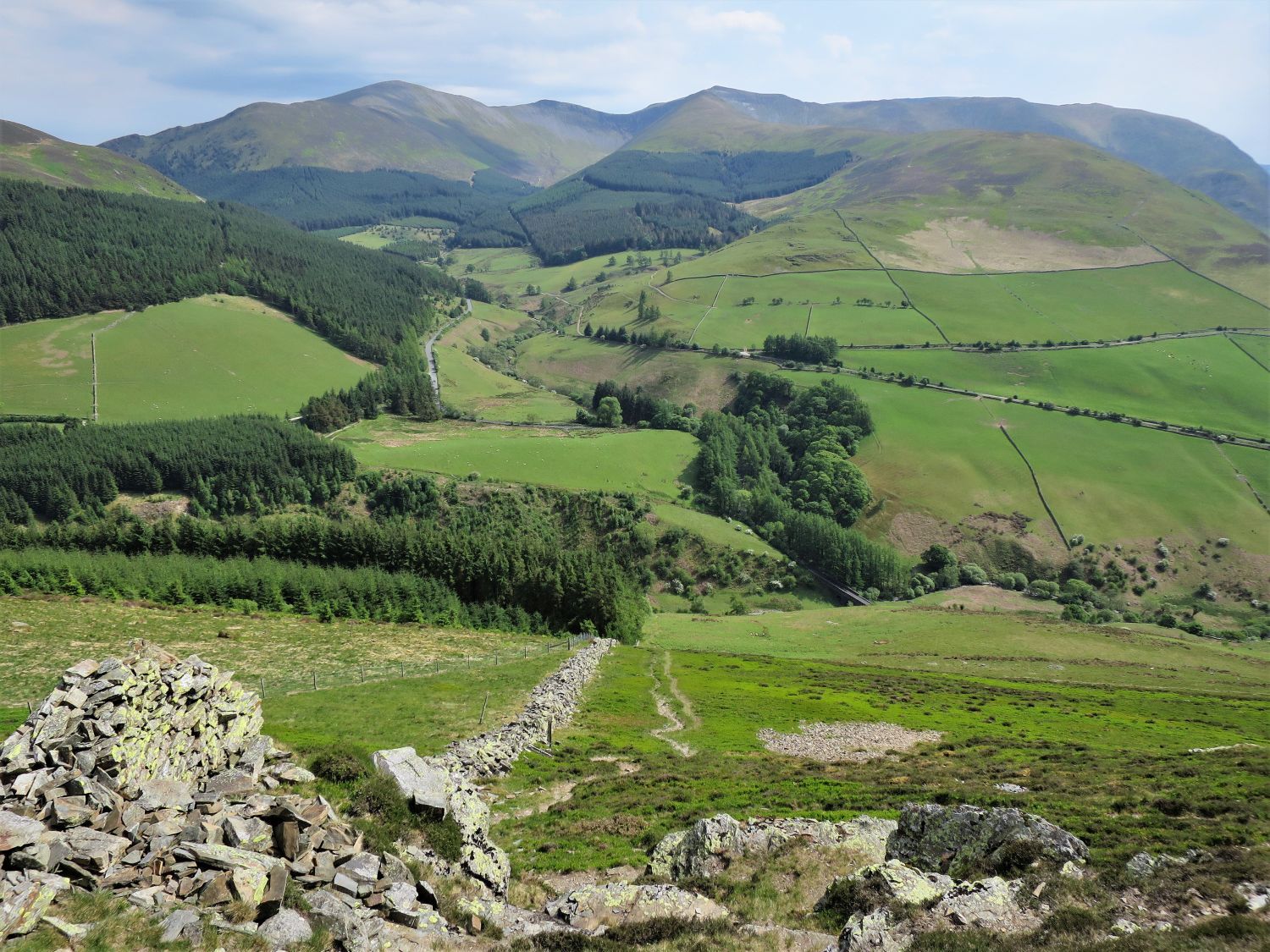 Looking back towards Grisedale Pike, Hopegill Head and Grasmoor
Looking back towards Grisedale Pike, Hopegill Head and Grasmoor
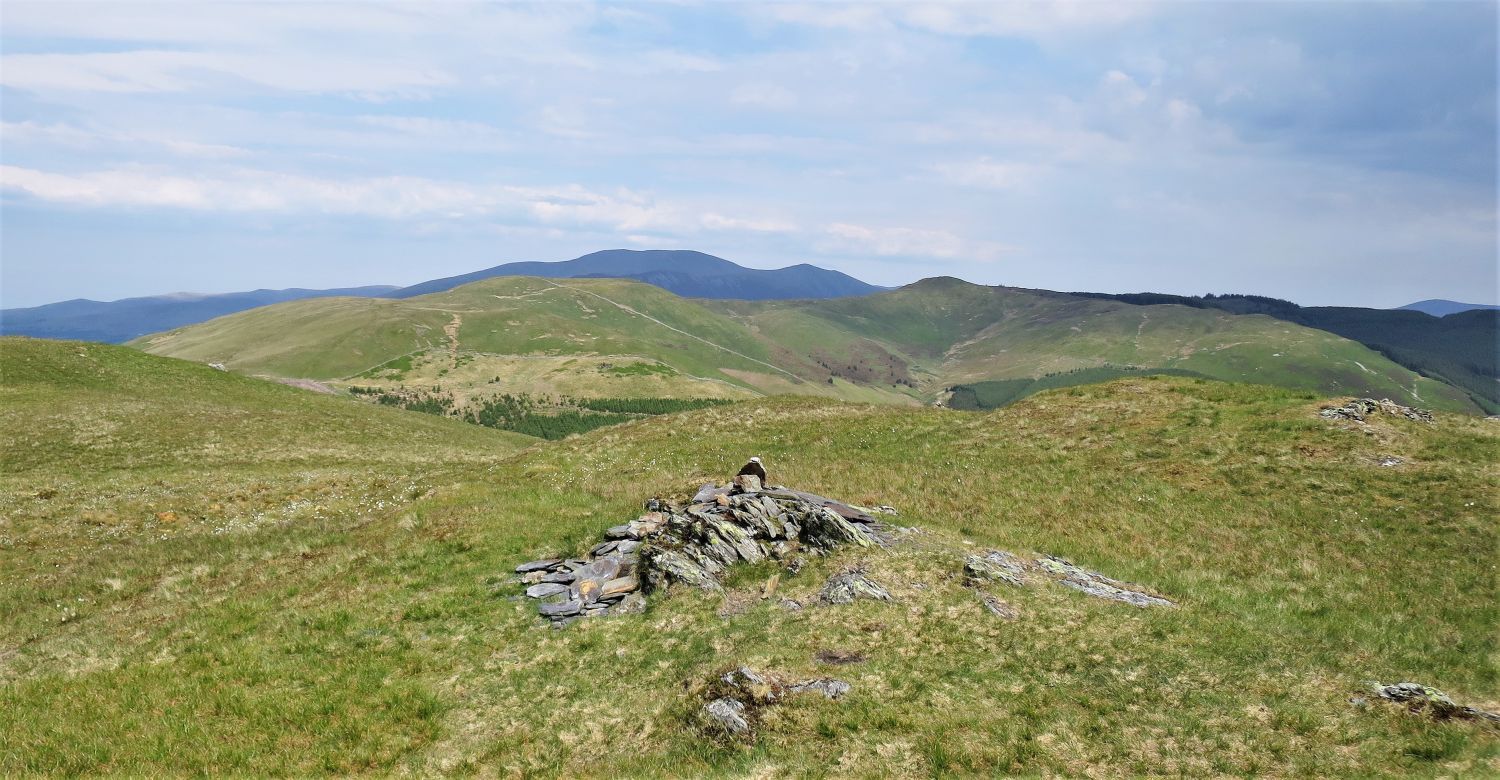 Broom Fell and Lord’s Seat from the ‘true’ summit of Graystones (6th)
Broom Fell and Lord’s Seat from the ‘true’ summit of Graystones (6th)
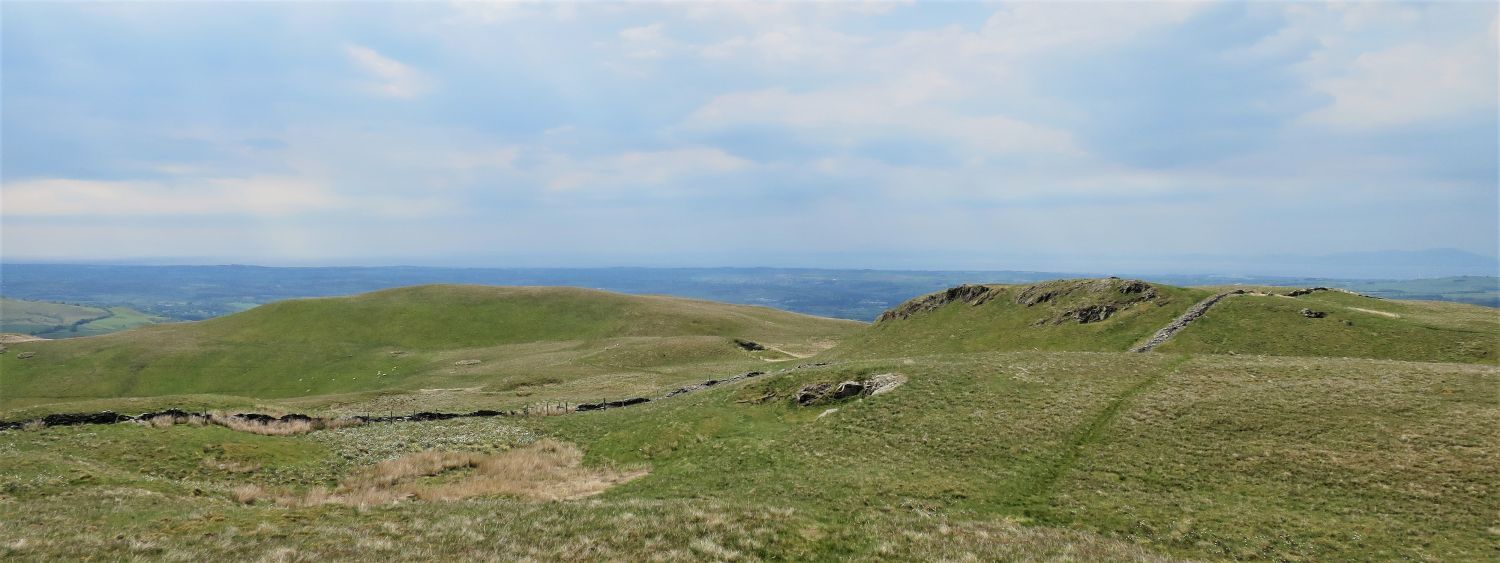 Kirk Fell and Wainwright’s summit, from the ‘true’ summit of Graystones
Kirk Fell and Wainwright’s summit, from the ‘true’ summit of Graystones
“The point generally considered to be the summit lies a few yards west of the broken wall and fence crossing the top of the fell, but according to the 2 1/2″ Ordnance Survey map there is higher ground farther east” Graystones 9
CJ
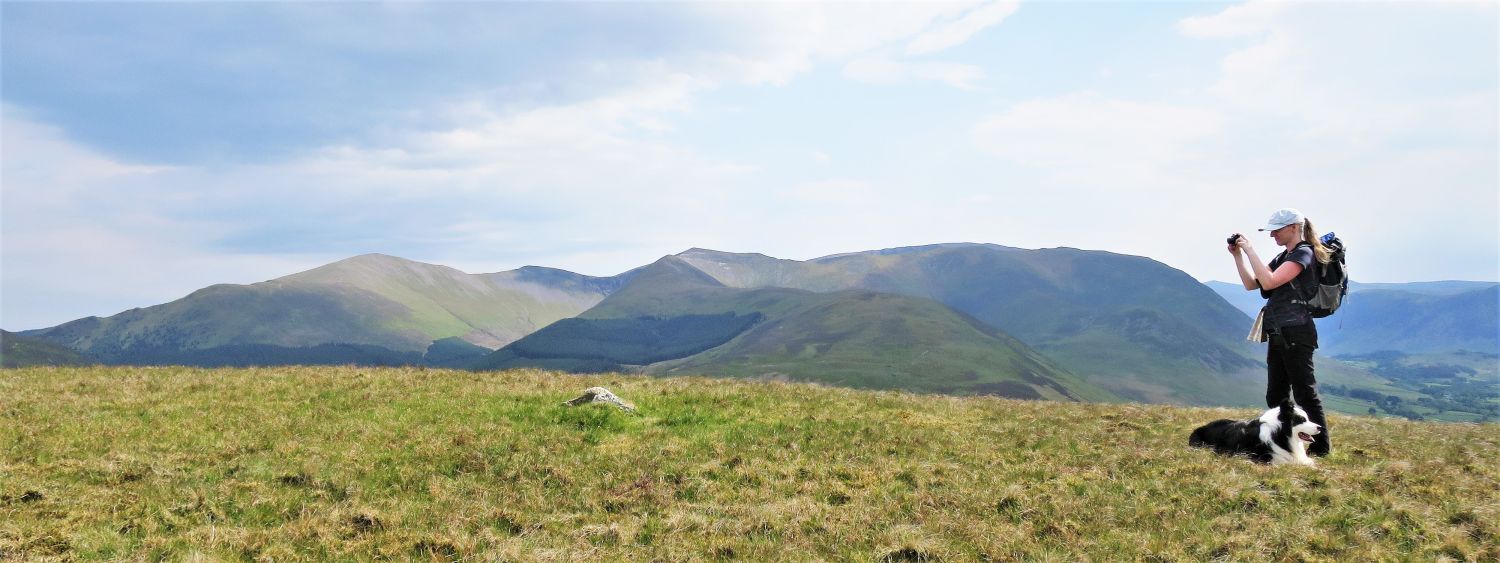 Grisedale Pike, Hopegill Head and Grasmoor, from the summit of Kirk Fell (7th)
Grisedale Pike, Hopegill Head and Grasmoor, from the summit of Kirk Fell (7th)
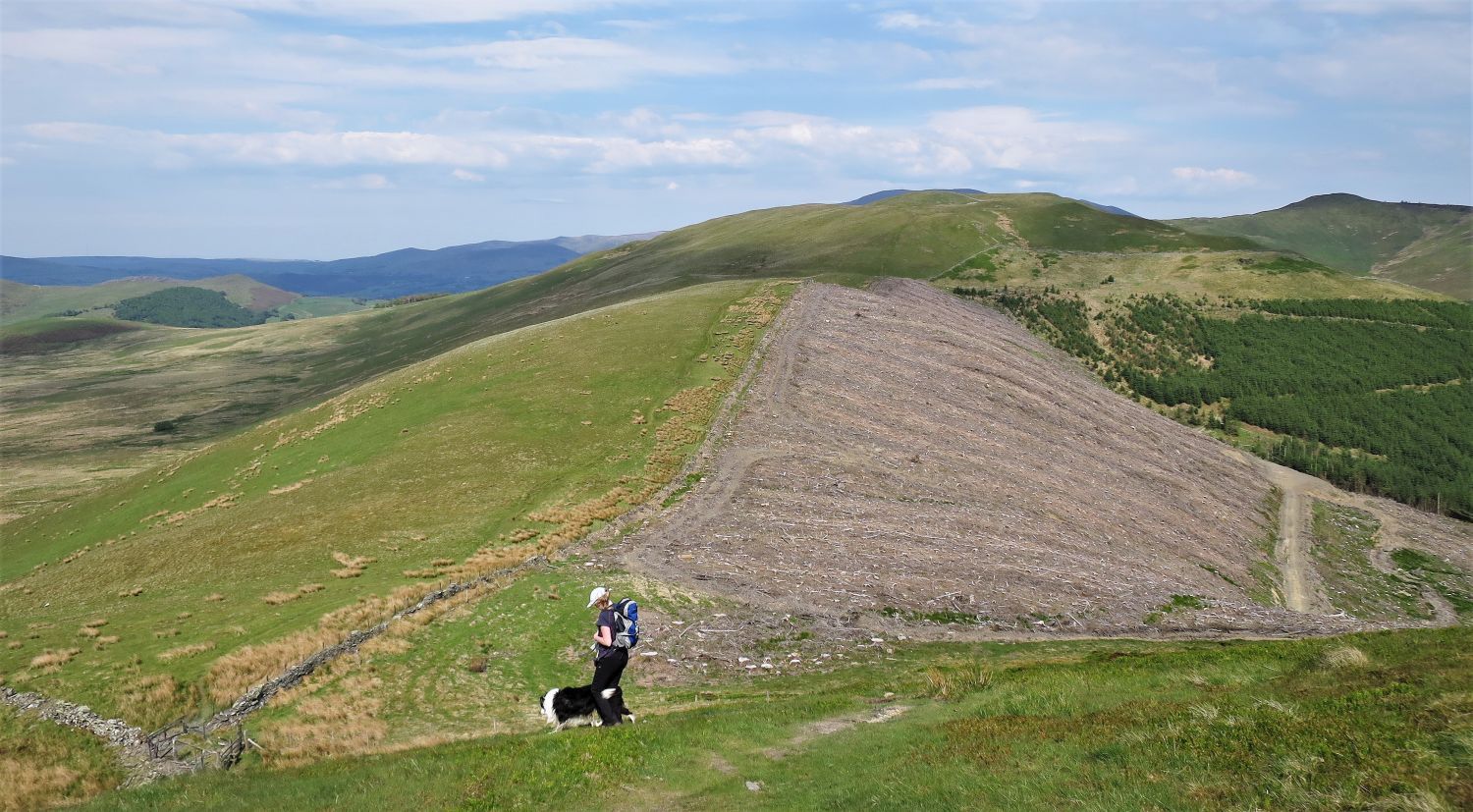 Widow Hause from the descent of Graystones
Widow Hause from the descent of Graystones
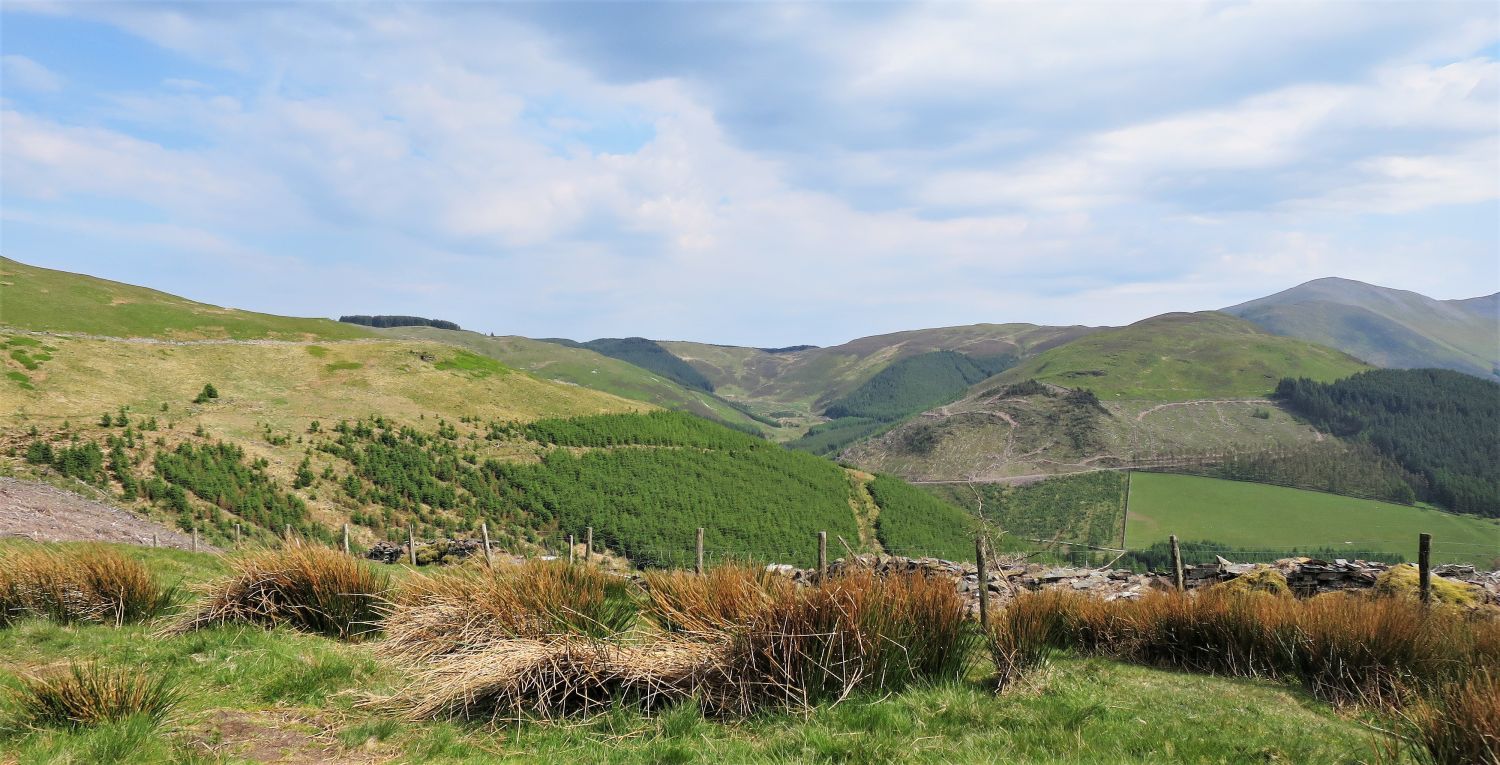 Aiken Valley from Widow Hause (8th)
Aiken Valley from Widow Hause (8th)
Widow Hause is a fell listed in ‘The Lakeland Summits: Survey of the Fells of the Lake District National Park’ by Timothy Synge (1995).
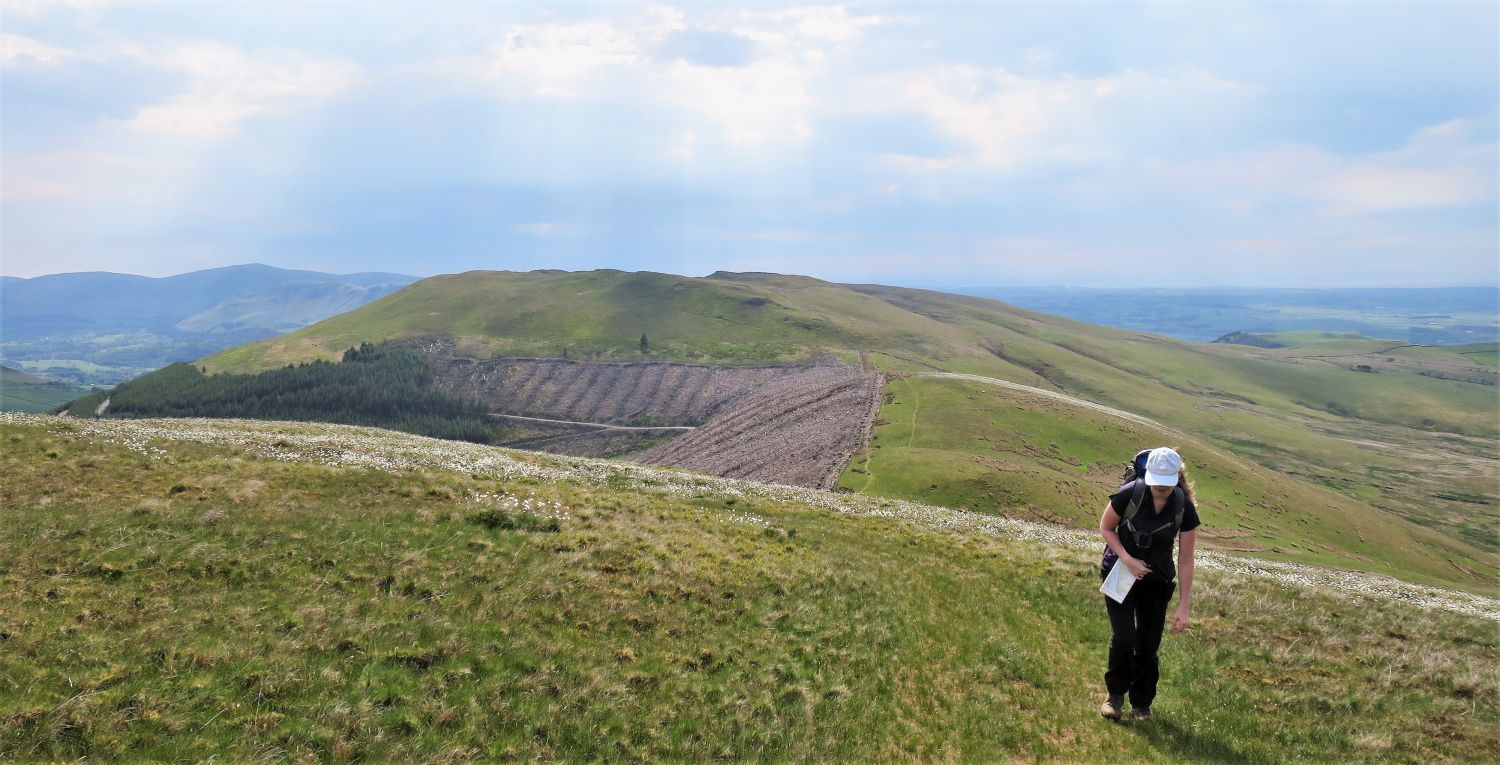 Looking back towards Graystones and Widow Hause, from the ascent of Broom Fell
Looking back towards Graystones and Widow Hause, from the ascent of Broom Fell
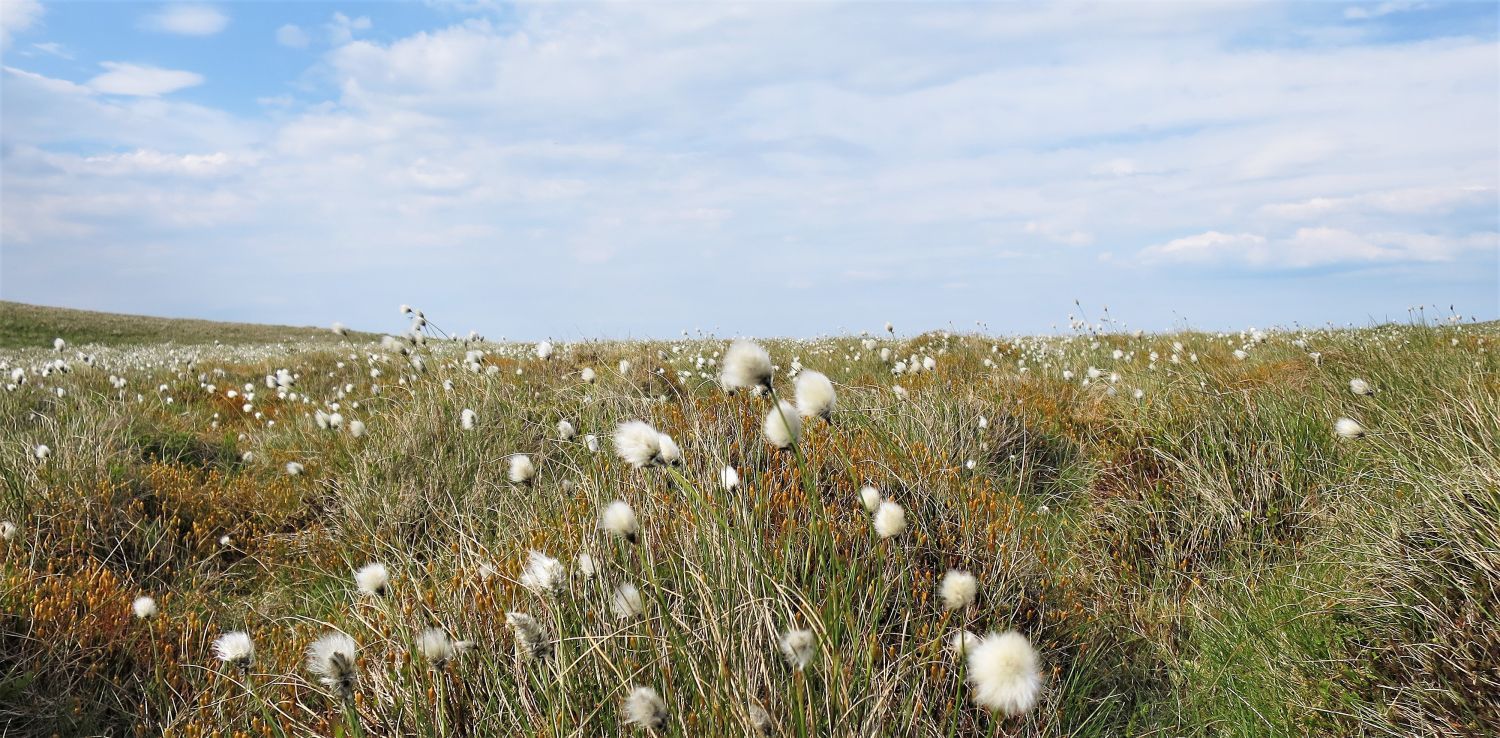 Cottongrass on Broom Fell
Cottongrass on Broom Fell
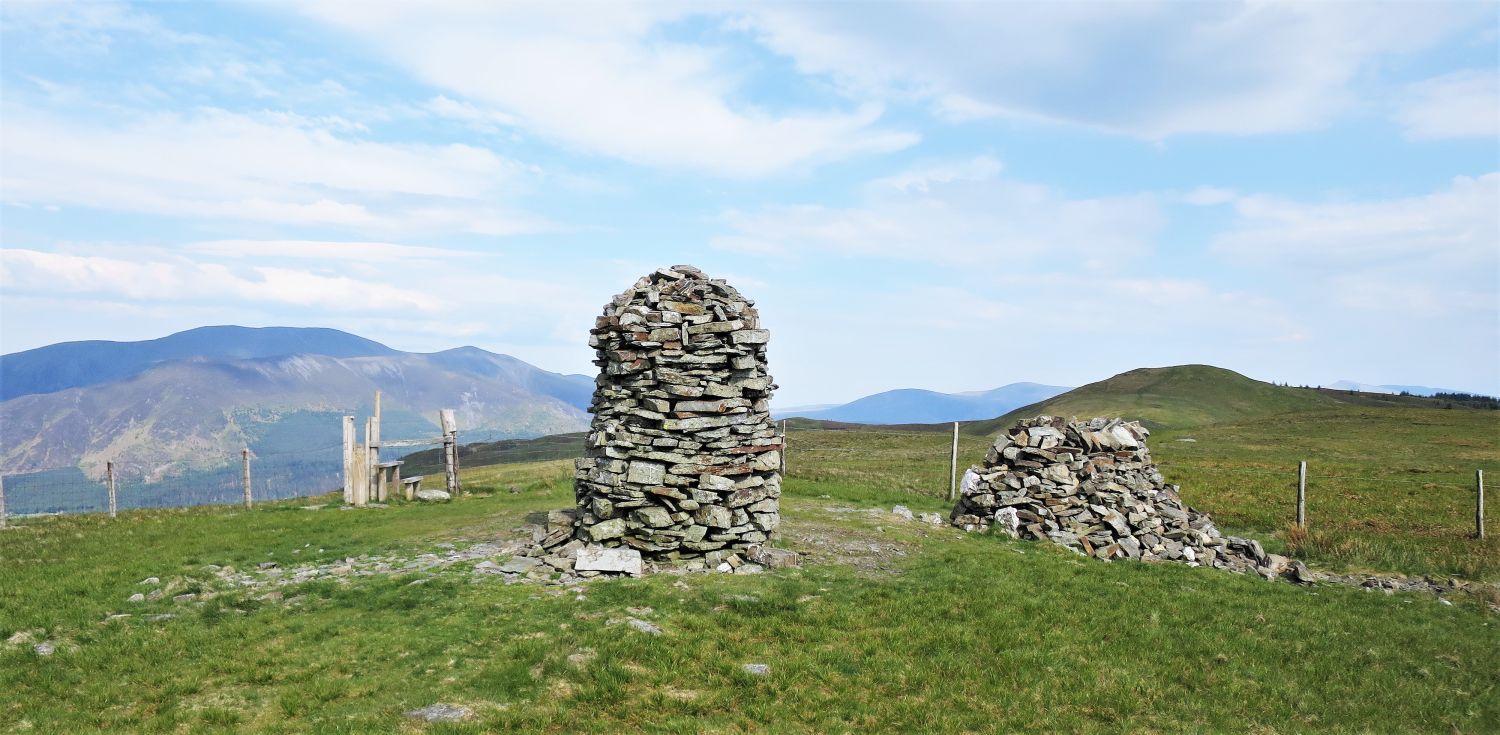 Lord’s Seat from the summit of Broom Fell (9th)
Lord’s Seat from the summit of Broom Fell (9th)
“The highest point is marked by a very fine column about seven feet high capped with a quartz stone. Fences stretch both north and south.” Broom Fell 6
CJ
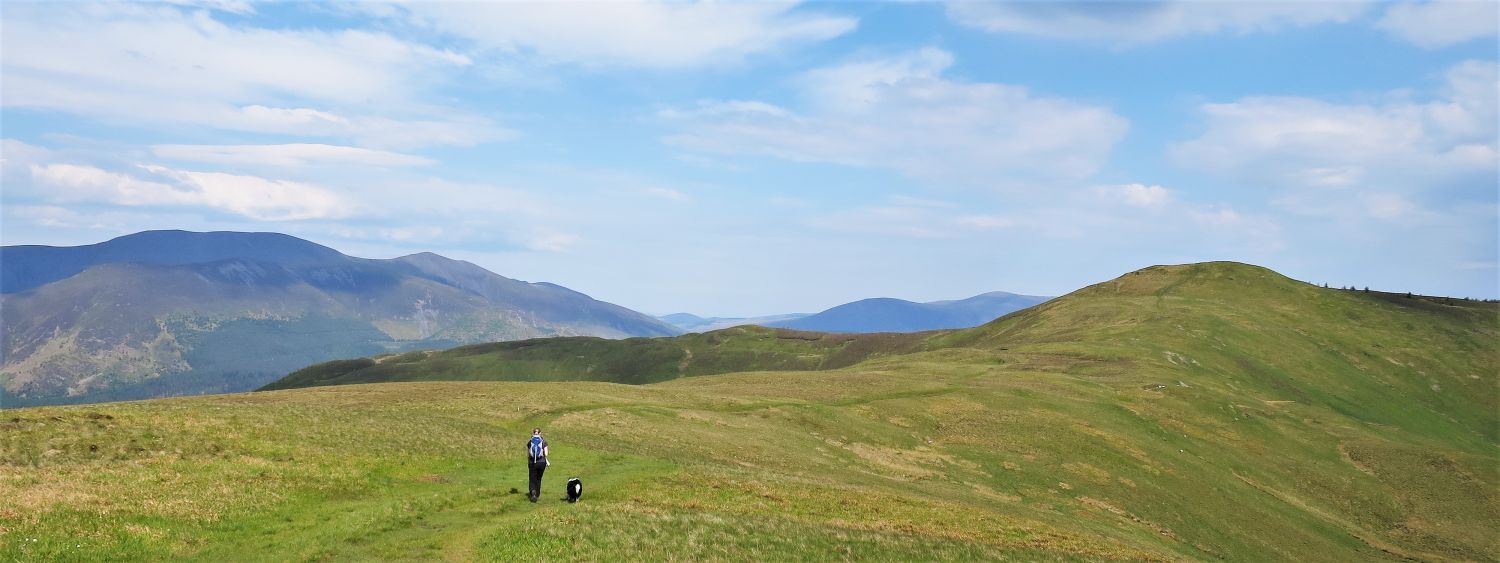 The Broom Fell ridge towards Lord’s Seat
The Broom Fell ridge towards Lord’s Seat
“The ridge is wide, marshy in places, and carries a path; it has many small undulations, and the actual lowest point, at 1585′, just before the ground steepens into the final rise of Lord’s Seat, cannot be identified with certainty; not that it matters.” Broom Fell 8
AW
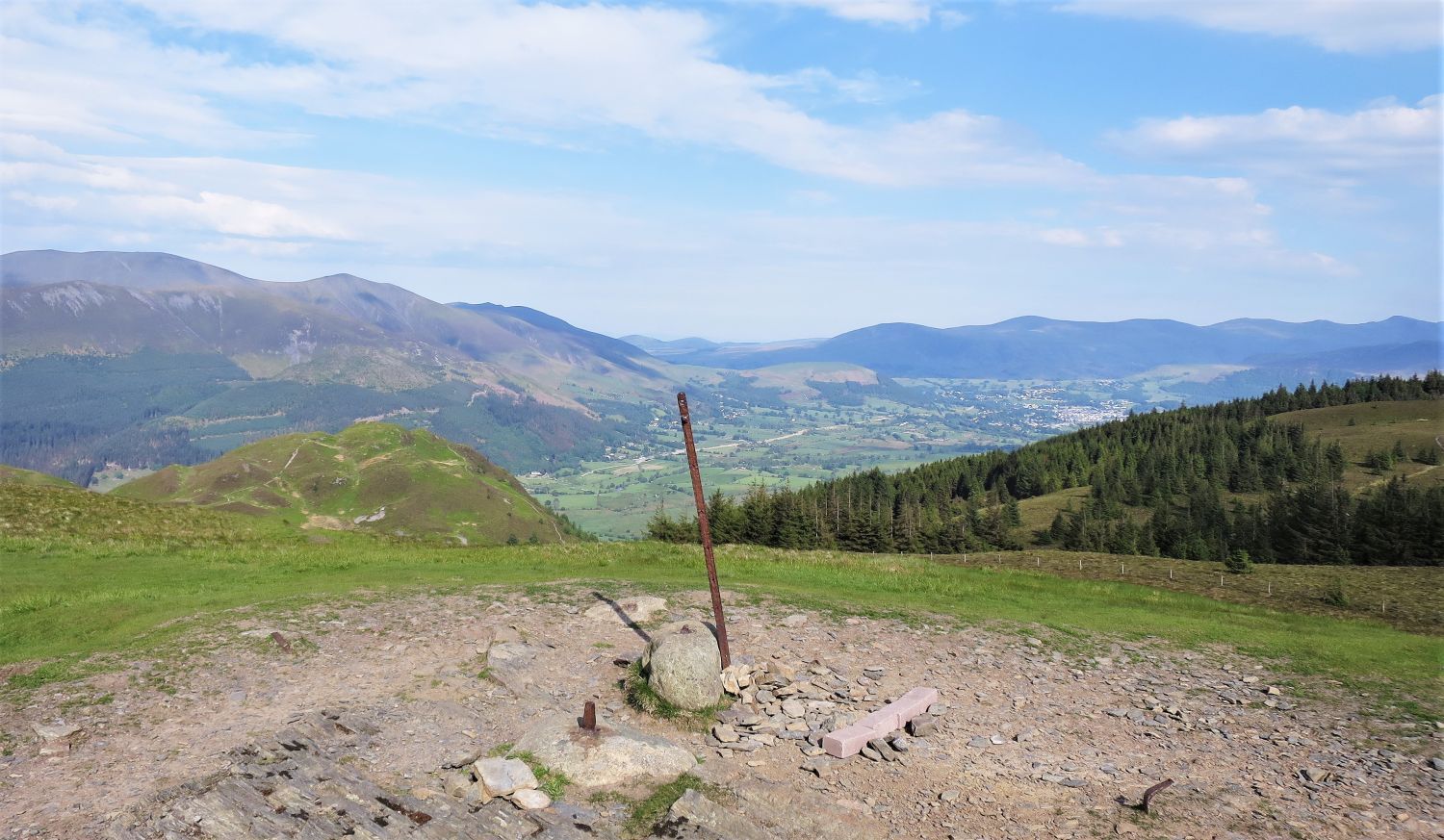 The Vale of Keswick from the summit of Lord’s Seat (10th)
The Vale of Keswick from the summit of Lord’s Seat (10th)
“Since the creation of the Whinlatter Forest Park, Lord’s Seat has become a popular climb – and the heathery top is a pleasant lunching-place, retaining the indefinable charm of Lakeland in spite of the advancing march of the Norwegian and American spruces in all directions.” Lord’s Seat 2
AW (revised by CJ)
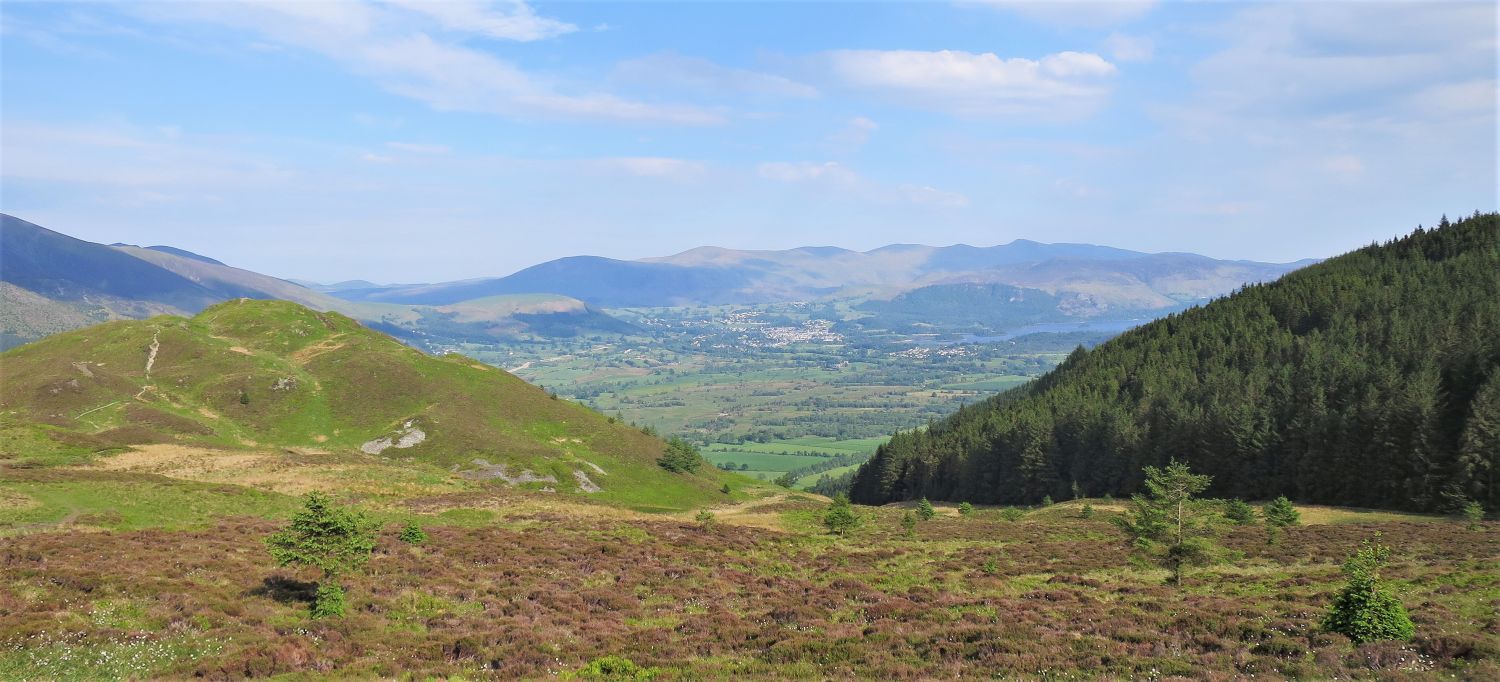 Barf (left) and Beckstones Gill (right)
Barf (left) and Beckstones Gill (right)
We now head towards our 11th and final summit of the day, before the descent of Beckstones Gill and back to the car at Powter How.
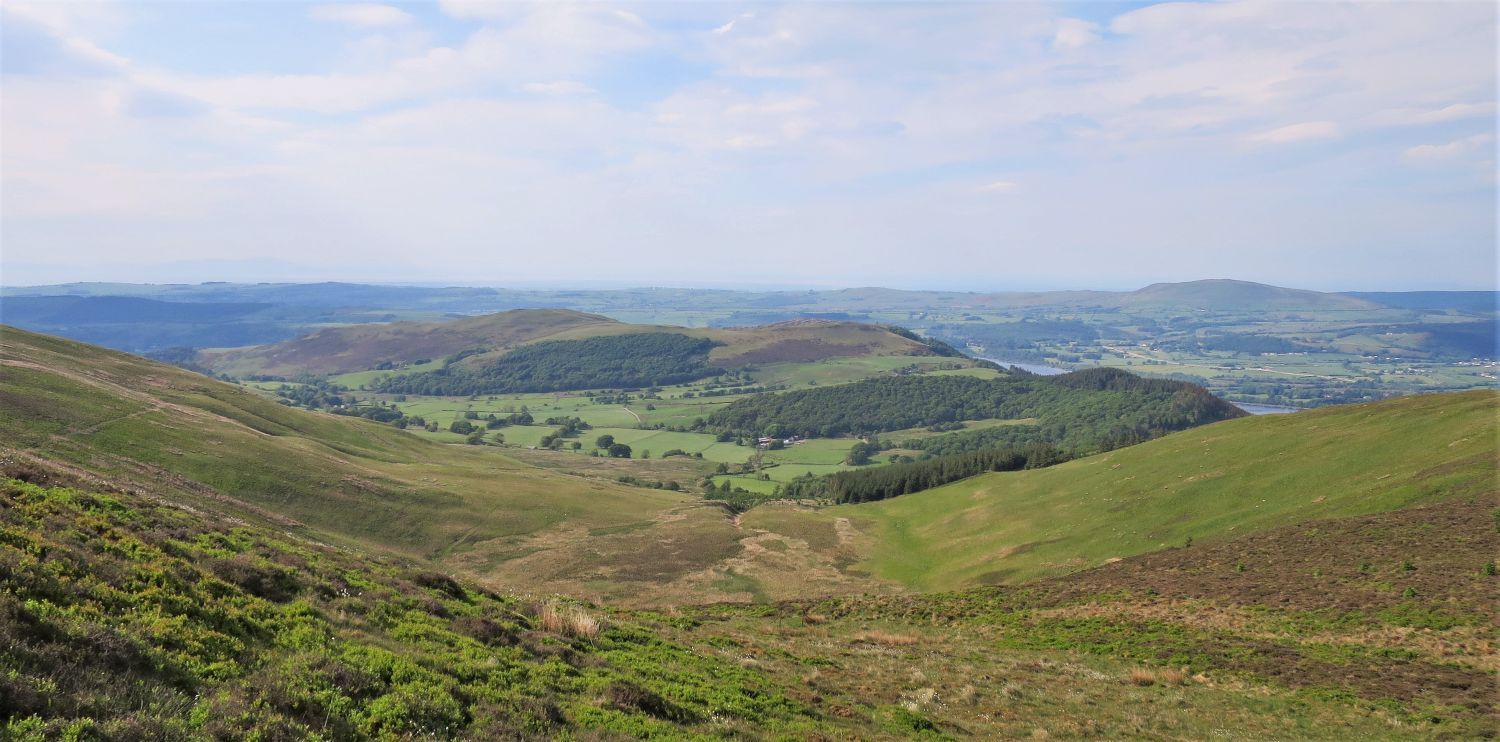 Looking back to Sale Fell over the Wythop Valley
Looking back to Sale Fell over the Wythop Valley
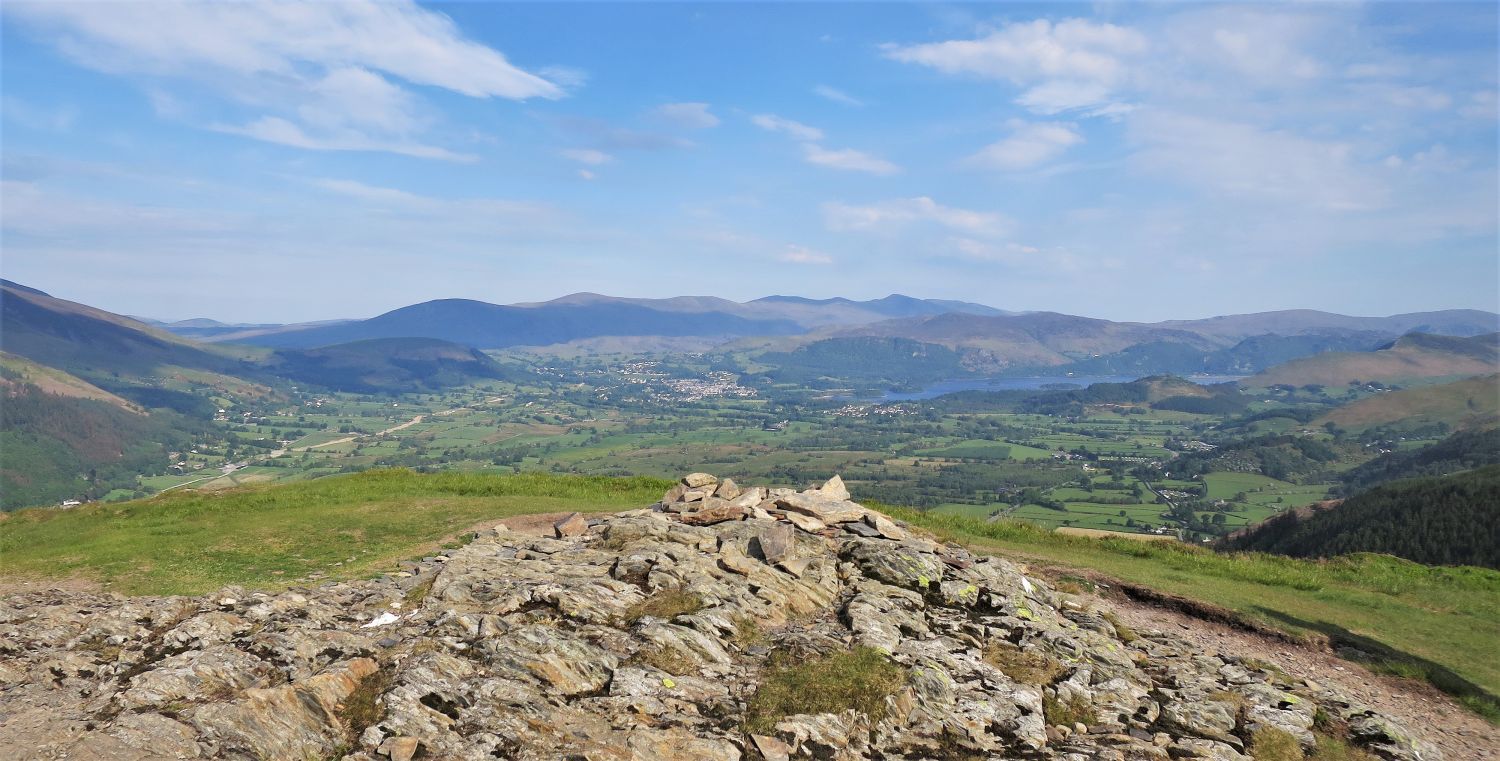 The Vale of Keswick and Derwent Water, from the summit of Barf (11th)
The Vale of Keswick and Derwent Water, from the summit of Barf (11th)
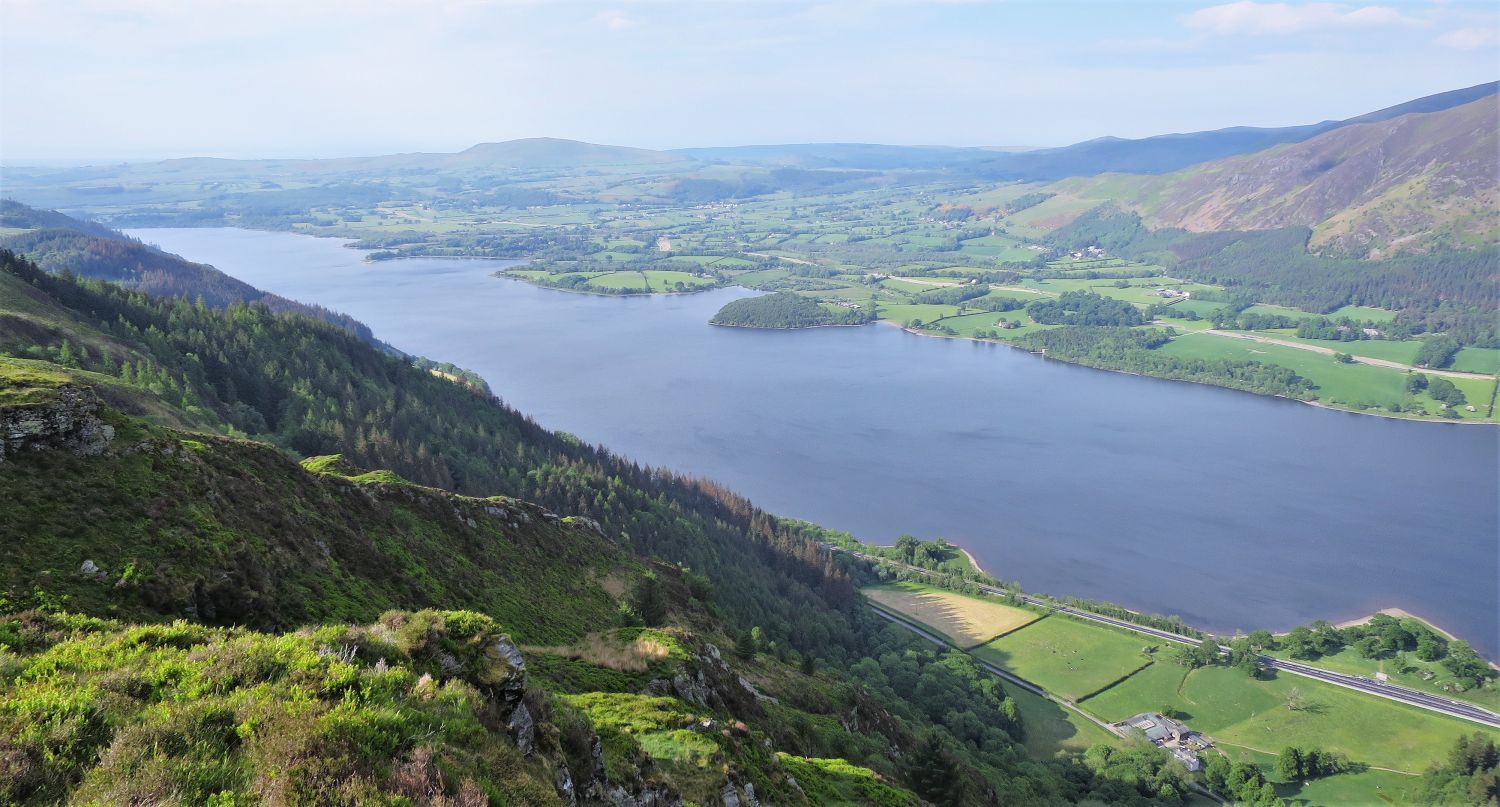 Bassenthwaite Lake from Barf
Bassenthwaite Lake from Barf
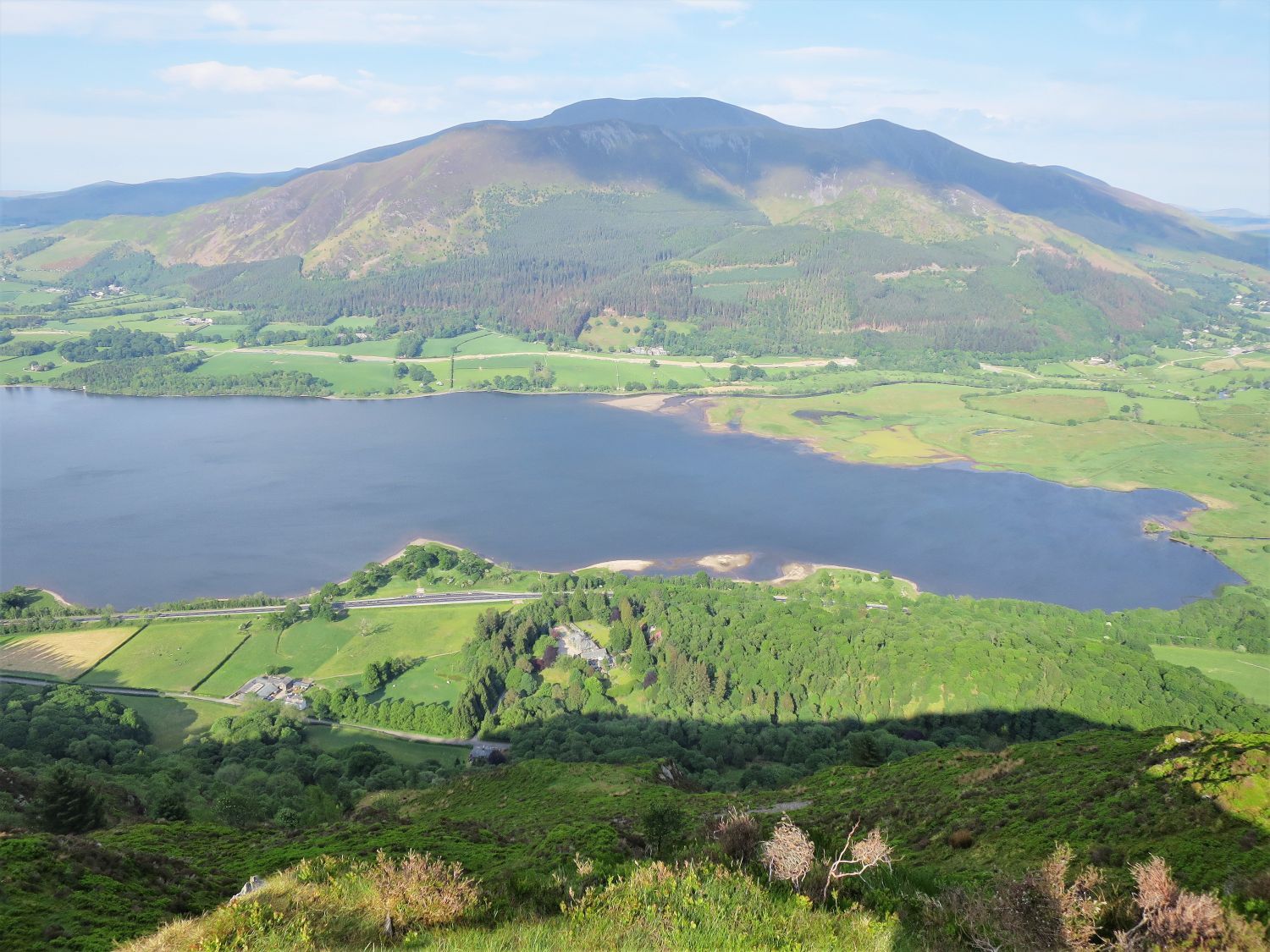 The Skiddaw group over Bassenthwaite Lake
The Skiddaw group over Bassenthwaite Lake
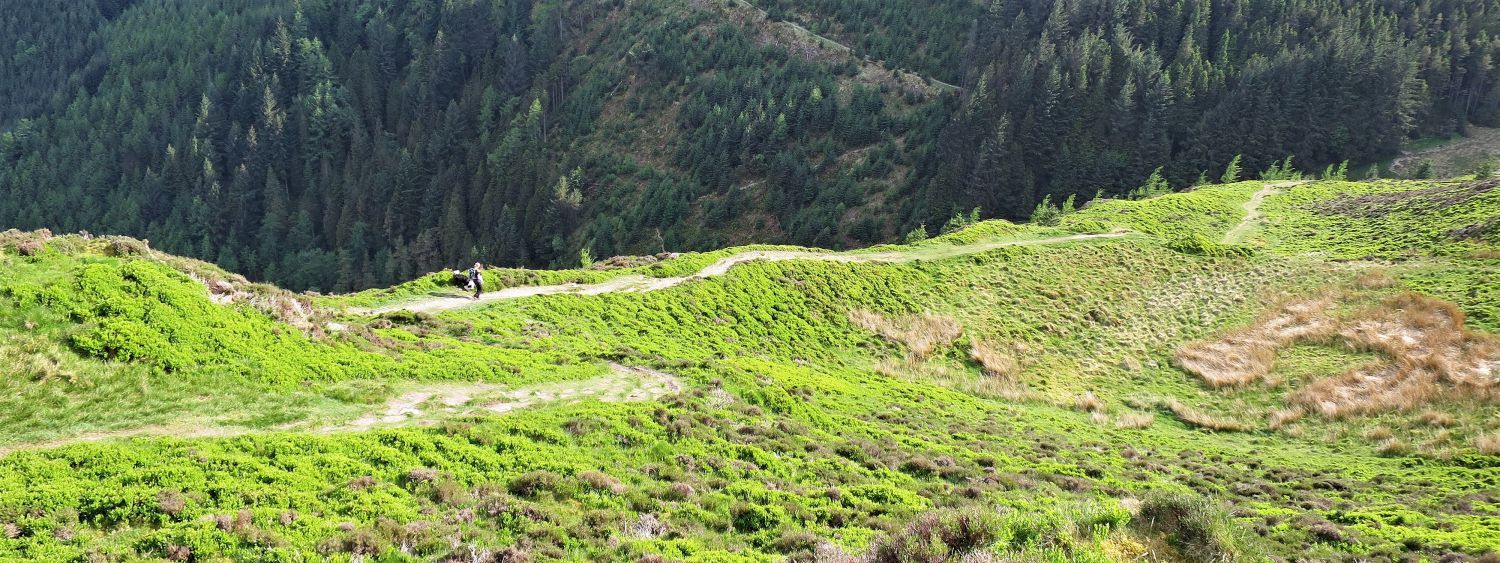 The descent of Barf towards Beckstones Gill
The descent of Barf towards Beckstones Gill
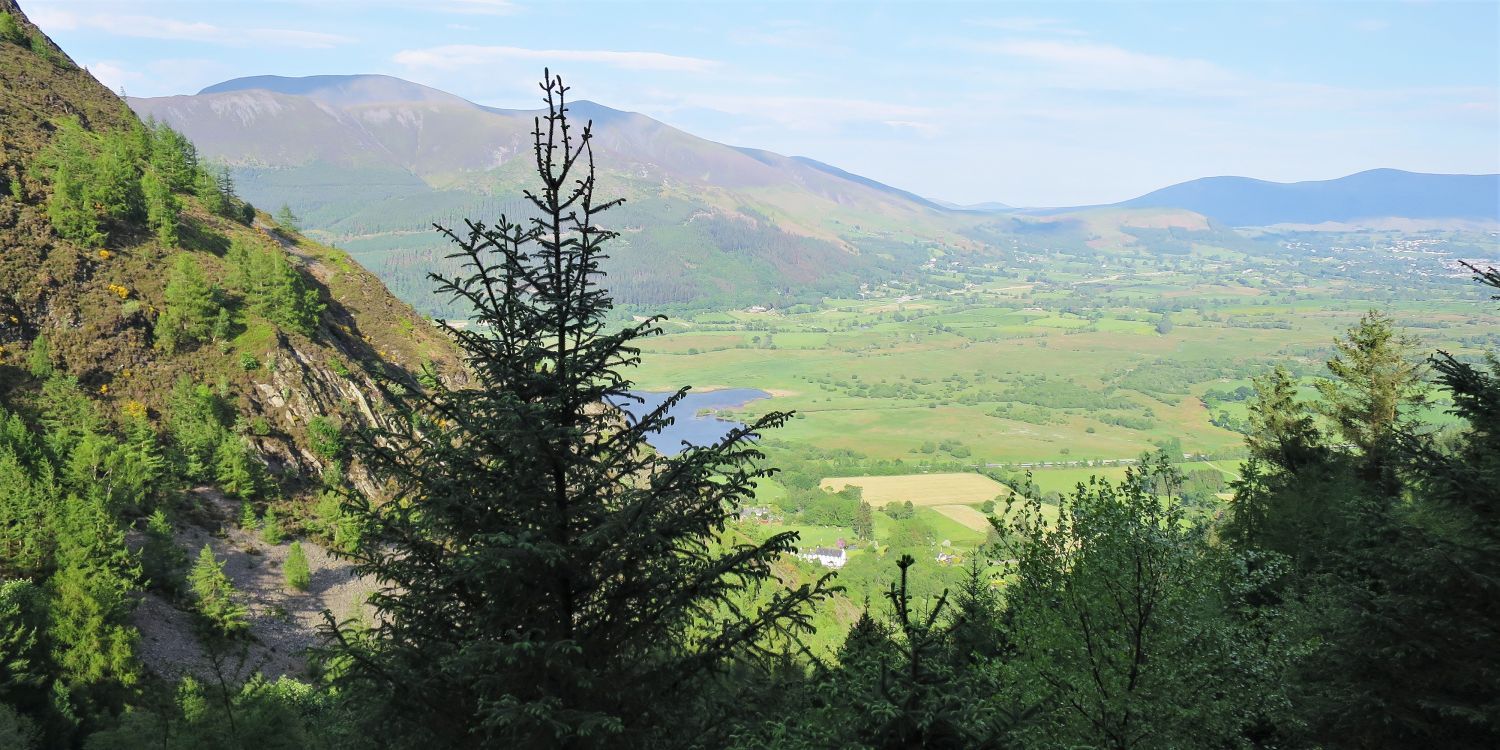 The Vale of Keswick from Beckstones Gill
The Vale of Keswick from Beckstones Gill
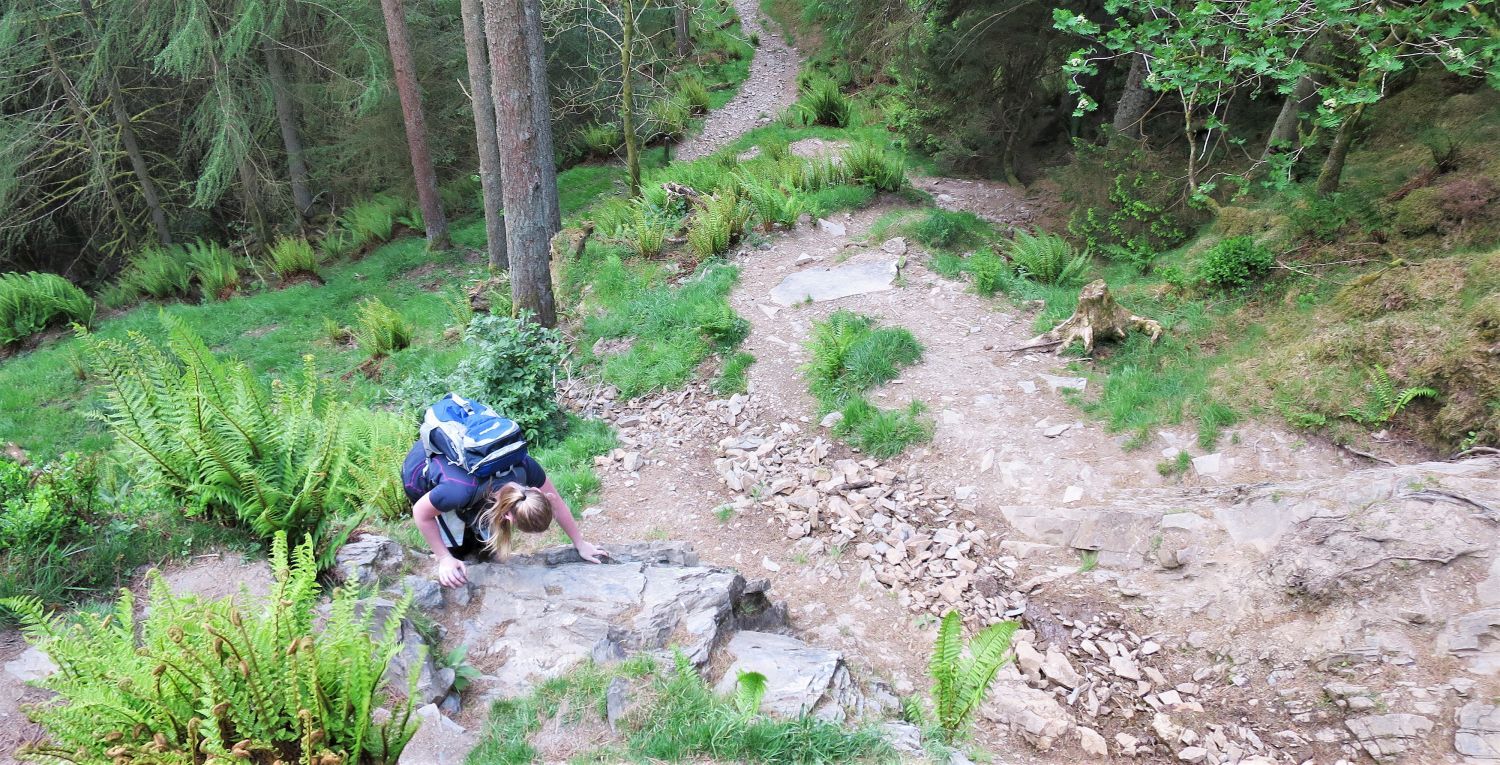 Back to the ‘small rockface’ in Beckstones Gill
Back to the ‘small rockface’ in Beckstones Gill
The climb down this rockface is quite easy on a dry day like this, but in wet conditions it can catch people out.
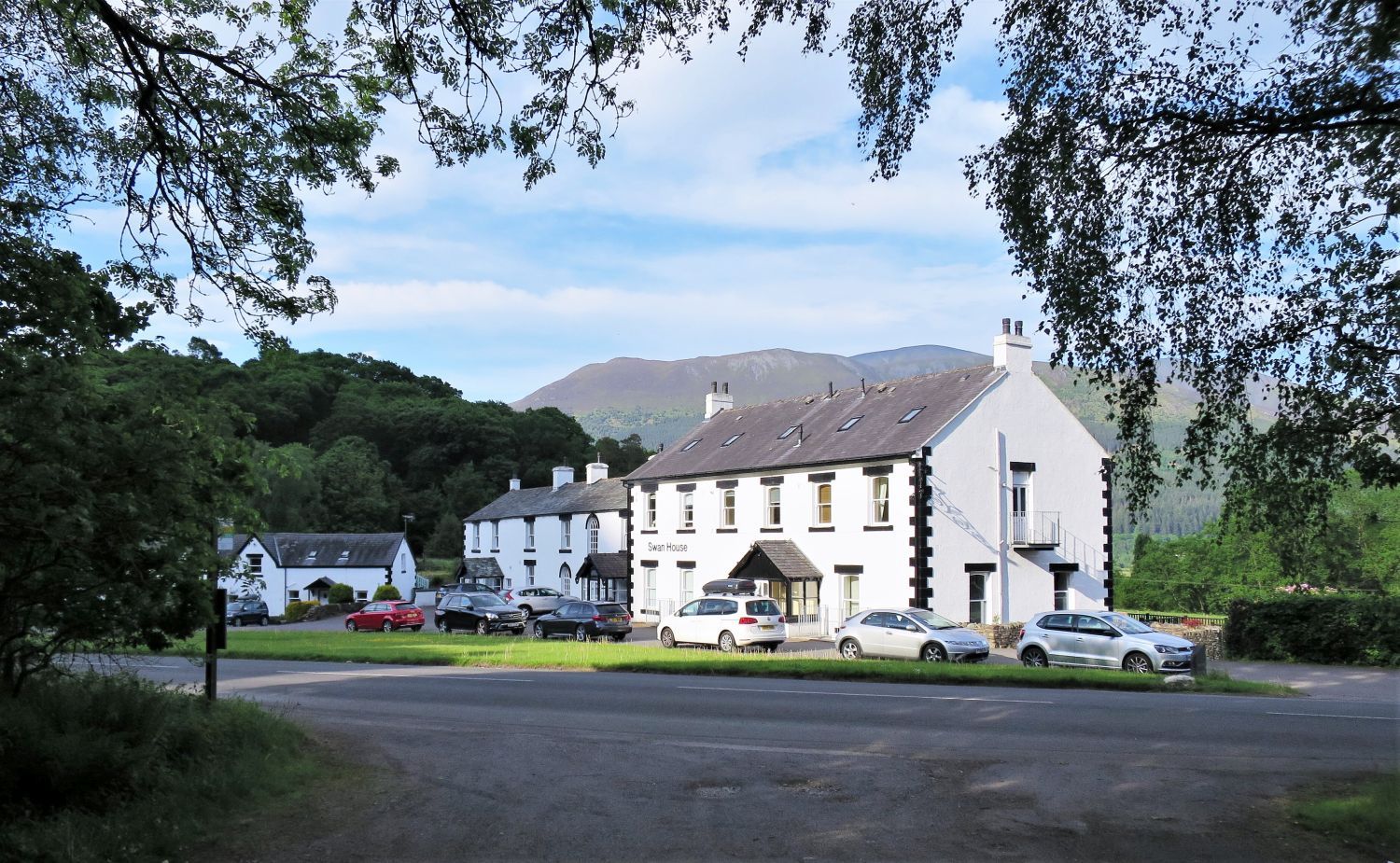 Back at Swan House in Powter How
Back at Swan House in Powter How
Thank you for visiting.
Richard Jennings

